Two continents, a 1954 VW Kombi, and a life-changing 13,500-mile adventure
“I shall be telling this with a sigh, somewhere ages and ages hence: Two roads diverged in a wood, and I—I took the one less traveled by, and that has made all the difference.” — Robert Frost
There’s no way to know if “The Road Not Taken,” Robert Frost’s 1915 poem, ever crossed the lips of a group of courageous travelers looking to satisfy their wanderlust in the late 1950s. But the intrepid South Africans exemplified its message.
Today, it has never been easier to get from point A to point B, no matter how far the distance. We consider ourselves adventurous if we fly over an ocean, tour Europe by train, and “make do” only with what fits into a backpack (like our smartphone). Bonus points for sleeping in a hostel.
In 1958, brothers Carel, Marius, and Johan Marais, along with their traveling companions Joan Povall and Audrey Nives, would have probably equated the above scenario with what we’d today call “glamping.” Sixty-three years ago, the fearless travelers drove 13,500 miles from Cape Town, South Africa, to London in a standard rear-wheel-drive 1954 Volkswagen Type 2 Kombi. They brought along small jerry cans of gasoline and water but had to carefully monitor the consumption of both. Without a refrigerator, they ate canned and dry goods and whatever fruit and vegetables they could get along the way. They had none of the luxuries that we now take for granted, like daily use of restrooms and bathing facilities … no outside communication beyond the letters they mailed and received at government embassies along the route … and no roadside assistance of any kind—unless you count the kindness of strangers and their vehicles. Or farm animals.

It would be an understatement to say that the group’s four-month trip across two continents emboldened its participants and forever changed their lives. Carel Marais and Joan Povall grew so close, in fact, that they fell in love and later married. The couple’s daughter, Louise, and her two older brothers heard so much about their parents’ South Africa-to-England expedition while growing up that they too became adventurous travelers.
When Joan Marais passed away in 2018, Carel gave Louise her mother’s diary, and she was so enthralled with the detailed account of the trip that she turned it into a book. Earlier this spring, 1958: Home is a Journey was released by Austin Macauley Publishers.

“It’s an epic story,” says Louise, who now lives in Australia with her teenaged daughter and son. “When you think about just how hard it was … the things they went through to finish what they started. In the back of their minds they had to wonder, will the Kombi break? Will we run out of petrol? Will we run out of water? It was an enormous challenge. What an example they set for us, and what an amazing legacy they left.”
Louise says the family knew about Joan’s diary all along, and they encouraged her to turn it into a book. Louise finally made it happen. “When my dad passed her diary on to me, I knew a lot of those stories already, but it was still fascinating. Since it read more like a travel diary, I felt the best way to do this would be to just let her tell her story. Ninety-five percent of what’s in the book are her words.
“I went through photos for a month to choose which ones I wanted to use. I even quit my job [as a financial advisor] to do it. I figured I had one shot at it, and I wanted to do it right. It was quite a journey.”
So was the trip.

Prologue
“From a young age, my parents’ trip through Africa filtered into our family’s everyday lives,” Louise wrote in the book’s introduction. “Travel, adventure, doing extraordinary things was often our norm. My first trip overseas in 1976 was when I was 6 years old. I had flown my dad’s work airplane and helicopter before age 10, and we could all ski (water and snow) by the age of 10. My dad’s work saw us move around South Africa, and I had changed towns three times by the time I finished high school.
“As kids, we would often watch the cine [film] taken during this trip. Our parents would narrate, with my mum always ensuring factual correctness, (and) my dad only too happy to concede, sparing him the need to retrain ‘irrelevant’ detail. Their trip lived within them, was an expression of their spirit, and was engrained into our lives through the encouragement to do, to take risks, to make changes, to not be afraid of the unknown, and to be eternally bored with the ordinary.”
That was definitely the mindset of the travelers, who planned the trip for months—mostly through the mail—before setting out on their long journey. It helped that Carel Marais and a buddy actually made a similar trip in a small Renault two years before. This time around, Carel suggested that he and his brothers, all engineers, repeat the journey in a larger vehicle and remain in London to look for work. That’s how it started, anyway.
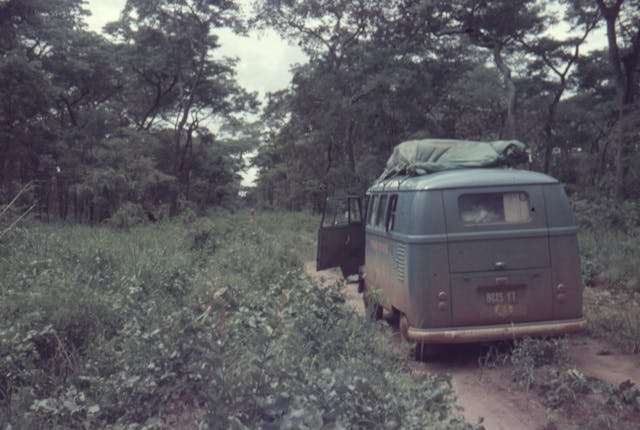
Carel had dated Joan Povall’s sister prior to his first expedition to England, but it was Joan he remained in contact with after that, although the two never dated. Joan and her friend Audrey were also planning a trip to London—by air—when Carel talked the two into joining the brothers on a more adventurous trip. Bringing along two females changed the group’s dynamic, as well as the sleeping arrangements. In a letter to Joan in September 1957, Carel promised that the ladies could sleep inside the Kombi that he had just purchased, and the brothers would camp outside.
Letters back and forth firmed up their plans: schedule, gear, clothing, cameras, passports, and individual responsibilities. Joan was impressed with Carel’s good fortune in securing the Kombi, which had only 1300 miles on the odometer. He failed to tell her that it was painted blue, which seemed more important to her than its mileage or that he had installed a roof rack to carry their belongings. Referring to the VW as die skilpad (Afrikaans for turtle), she wrote, “You silly so and so, why didn’t you tell us what color our traveling home is? Here we are dying to know something about it and all you tell us is its mileage and touring (capabilities). Gosh Carel, you really sound as if you have struck something wonderful.”
Joan also asked if she and Audrey should bring a “gas pistol,” a non-lethal weapon used for self-defense. Carel replied: “It may be good if you take the gas pistol with—you may need it to keep the Maraises in their place.”

The journey begins
Carel (then age 27), Marius (25), Joan (25), and Audrey (27) left George, South Africa, in the right-hand-drive “Flying Bedstead” on December 29, 1957, and Johan (31) soon joined the group. After dancing the night away in Vanderbijlpark on New Year’s Eve, they rested on January 1 and set out early the following day. Joan was properly celebrated on her birthday, January 3—no chores!—while Audrey, an accomplished artist, began painting slogans, flags, and illustrations on the Kombi. On one side, she painted an African hut on wheels pulling a smaller hut to symbolize their “mobile home” with a traveling toilet in tow. Above it, she added the words “Ikaya eli Hambaya,” which in Xhosa (Nguni Bantu language) translates to “the house that travels.” It can also have a more symbolic connotation of “home is a journey,” which Louise used as the title of the book.
Joan’s diary entries recapped each day’s activities, and some noted holidays or when the travelers had taken a dose of Daraprim, a preventative drug for malaria and other parasitic illnesses. Other more detailed entries revealed the travelers’ struggles with rain, mud, heat, wind, desert sand, mosquitos, border crossings, animal encounters, and flat tires, which they had to repair themselves if replacements were nowhere to be found. Getting stuck in deep mud or sand required extended digging, or pushing, or pulling—or all three—and the travelers celebrated their good fortunate whenever a Land Rover or team of horses or oxen would appear and lend them a hand. On more than one occasion, Joan praised the Kombi’s resolve, despite the fact that it was “taking a hammering.”
And that was before January 29, 1958.
Rhinos, mishaps, and close calls
On that memorable day in Kenya, after Joan marveled at the size of the baboons and elephants, the Kombi drove through Tsavo National Park and the travelers saw bucks, giraffes, zebras, and hippos. With an African boy serving as their guide, the group went looking for rhinos—and succeeded. Be careful what you wish for.
“Johan was driving,” Joan wrote, “and all of a sudden, as we came over a rise, the boy shouted, ‘Rhino!’ Well, it was too late—there was a mother and her baby right by the side of the road. “What happened next was so quick that we didn’t have much chance to register properly. She put her head down and charged. I looked up to see about two tons of rhino coming for us. We couldn’t avoid her; Johan swung the Kombi off the road, but she hit us on the non-driver’s side. What a crash; she busted the light completely and buckled the door and front so badly that we can’t open the door. Fortunately for us, she didn’t come back. We found out why minutes later—there was a lion after her calf. Our lucky day.”

On February 3, while in Nairobi, Joan and Audrey went to lunch with friends in the area and enjoyed some sherry at an inn before their meal. In a sign of the changing times, Joan wrote, “I like the idea of a woman being allowed in the bar!” Later, however, she became frustrated with her travel mates, referring to them as “the late ones” and writing that their continued late nights was preventing the group from getting an early start each day. (Louise wasn’t surprised to read her mother’s words of frustration. “Both of my parents were very hands-on doers and never idle,” she recalls.)
After another prolonged trek through mud in Ethiopia, on February 9 Joan wrote, “Up early. Our food is running short. No more bread, will have to make it up with tinned beans, rice, and potatoes.” After driving through several villages, the group stopped to camp for the night, but they slept with one eye open. “The natives sang all night,” Joan wrote, wondering whether that was good or bad. “We were a bit worried.” Their fears proved to be unfounded.
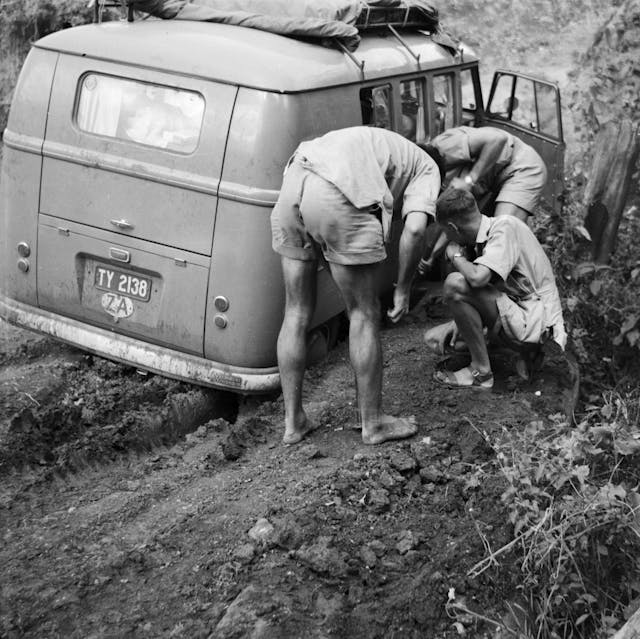
February 24 was a somber day, as Carel, Marius, and Joan said goodbye to Johan and Audrey. Johan chose to fly home to South Africa to be with his girlfriend—a good move considering she soon became his wife. Audrey’s absence, on the other hand, would be temporary. She was traveling on a British passport and wasn’t allowed into Egypt, which was still on high alert following the Suez Canal Crisis. She would eventually meet up with the group in Greece, but in the interim she would miss a lot: floating down the Nile River, visiting the Valley of the Kings, camping on the grounds of ex-King Farouk’s palace, and a harrowing desert crossing in which the remaining travelers used the stars to navigate before they stumbled upon some train tracks and followed them to the next village.
What a week!
Audrey also missed an exciting event on March 2. At the end of a seemingly uneventful day in central Egypt, Carel and Joan sat down for a long, serious discussion—and then he proposed. “I was very happy and hope it will work,” Joan wrote of their engagement, “but we have many difficulties to overcome.”
Two traumatic incidents soon drew them closer and sealed their bond. The first occurred on March 4. “The Egyptians seem to travel down the middle of the road and don’t move their animals or themselves until you are just about to run them over,” Joan wrote. “Driving through the numerous villages was an absolute nightmare … While I was driving through a place called Ishment, a fellow walked out from the side—walked right into the Kombi and I hit him. Fortunately for him and me I was only doing about 25 mph. I never even managed to break or swerve, as we he stepped out so suddenly. As soon as I stopped, a huge crowd gathered, and everyone was shouting at once. The fellow was l laying where the car had flung him, and he looked dead to me. I got such a shock that I couldn’t even get out and help him.
“Carel tried to tell the crowd to fetch the police, but trouble started and he lost two buttons off his shirt. A policeman arrived and told us to move the car to the police station. I didn’t want to, but the crowd was getting quite nasty … What a business; Carel was wonderful and really helped me a lot.”
The man was hospitalized overnight, but fortunately he didn’t suffer any serious injuries. The following day, the police let Joan, Carel, and Marius go on their way.
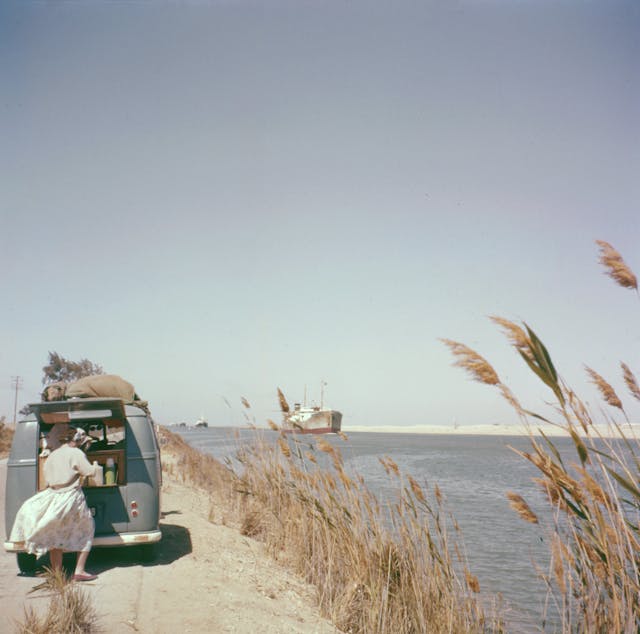
Just one week later, on the morning of March 11 in Port Said, Egypt, the weary travelers were awakened by three policemen. Joan wrote that two of them were “carrying guns big enough to blast us and the Kombi off the face of the earth.” After checking each of their passports, the police allowed the trio to camp for another night. But an officer returned after dark and demanded they break camp and follow him to the station. After heated words were exchanged, Carel persuaded the policeman to allow Marius and Joan to remain at the campsite if he agreed to go. For three hours, Joan nervously waited for Carel to return (while an unconcerned Marius slept). Accused of being a spy, Carel had been interrogated by a military captain who finally challenged him to an arm-wrestling match. Carel smartly lost on purpose, and the two ended up enjoying a drink together before Carel was released.
“I went nearly mad,” Joan wrote. “I was imagining all kinds of things … When Carel returned I nearly burst into tears.”
On March 13, she added, “I’m so glad and happy that I have got (Carel). Only hope we won’t have to wait too long once we get to London to get married.”
Rough seas, and the home stretch
When March 21 arrived, Joan wasn’t feeling well, but her spirits were lifted knowing they would soon board a ship for a roundabout voyage to Greece (which instead of taking a direct route included several stops, including Beirut). After the Kombi was loaded, the trio retired to their shared quarters—Joan “with two old ladies and a young girl,” Carel and Marius “with three old men.” They were awakened suddenly when the boat began to list in choppy seas and, fighting seasickness, they elected to stay topside until they arrived in Cyprus the following morning. The ship continued its long Mediterranean Sea crossing, finally reaching Greece on March 29. Audrey was waiting at the dock.
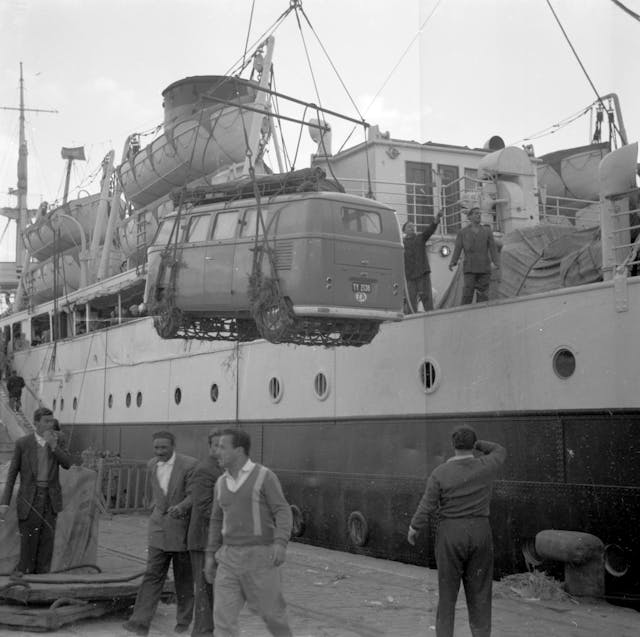
The next several days were obviously busy ones, as Joan wrote short entries in her diary while the friends enjoyed Athens. On March 30, she wrote, “Found Corinth and castle.” On March 31, she noted, “Acropolis, Visas, slept airport.” And on April 1, she wrote, “Athens, dinner at Busty’s.”
Heading north, the group seemed to enjoy everything that Europe had to offer. On April 7, they were also amused by an older boy in Yugoslavia, who while on his way to school traded Marius a bottle of wine for two cigarettes—a story that Louise finds “hysterical” for two reasons: “A parent sent their kid to school with wine and my uncle felt it quite appropriate to give a child cigarettes!”

Of course, the remaining portion of the trip to London wasn’t without its difficulties. In Yugoslavia, the Kombi needed to be towed up a hill by a team of horses, and the VW drove through snow in both Italy and France—even getting stuck in a blizzard. On April 17, the travelers reached Paris, and over the next several days they visited the Champs Elysees, Notre Dame Cathedral, the Eiffel Tower, the Louvre, and took in a show at the Moulin Rouge.
After overcoming a problem with the gearbox, they visited Brussels and Amsterdam before boarding a ship and crossing the English Channel into the U.K. On April 28, they finally reached London. Appropriately, the four did not celebrate the end of their long journey by enjoying a hot meal—instead they ate lunch inside the Kombi.
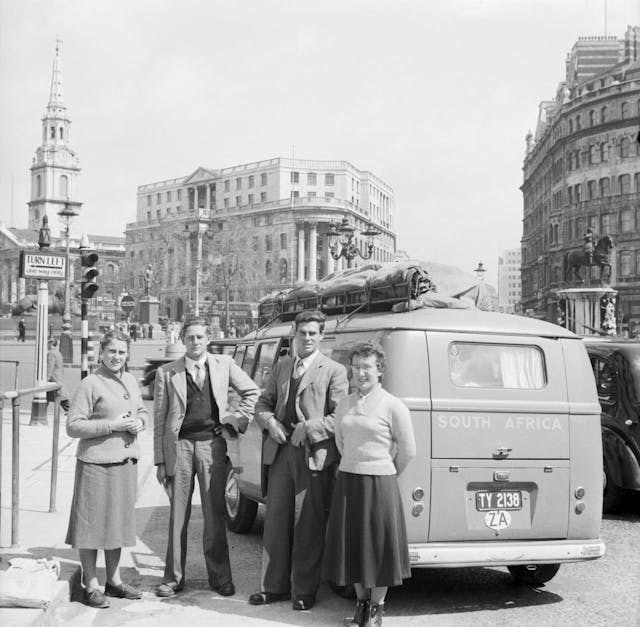
The trip cost each participant just over £120, the equivalent of about £2867—or $3950.
Epilogue
Less than two months after their arrival in London, Carel and Joan officially announced their engagement on June 19, and the two wed on July 26, 1958. Appropriately, the Kombi was notably present.

Carel later shipped the VW back to South Africa, and in September 1959, having paid £600 for it two years earlier, he sold it in Cape Town for £450. For four long months in 1958, however, its occupants considered it priceless.
“I’m not a car person, but what a car that Volkswagen was—what it went through,” Louise says. “Manual (transmission), no power steering, two-wheel drive … There’s no way someone would try that trip nowadays with that equipment. They’d have four-wheel drive, long-range fuel tanks, long-range water tanks, constant communication. That Kombi was really something.”
The five travelers remained close for the rest of their lives. Carl and Joan moved many times during Carel’s career as head of South Africa’s largest civil engineering company. Audrey—British born and raised—married a South African and eventually became a South African citizen while building a career as an artist. Marius, a bachelor his entire life, worked on roadways in England before returning to South Africa and accepting a job in the mining industry. And Johan and his wife settled in Johannesburg, where they raised two sons.
Carel Marais was the last living member of the group, and he spoke to his daughter every day, confirming facts and dates, while she finished the book. Carel died in February 2021 at age 92, just two months before the release of 1958: Home is a Journey.

“He was very excited that the book was coming out,” Louise says. “I would have dearly loved to have placed a copy in his hands.”
Regardless, she hopes that the travelers’ story will continue to motivate others.
“They had their share of trouble along the way. It was just a matter of them putting their heads down and figuring it out, or digging out—doing whatever had to be done,” Louise says. “They met a lot of helpful people along the way who were probably wondering, ‘What in the hell were you thinking?’ But that trip was—and still is—a real testament to the power of the human spirit, the pioneering spirit.
“Hopefully, it inspires people to get out there and have an adventure. You don’t have to drive across Africa and Europe like they did, just get out there and enjoy the ride.”

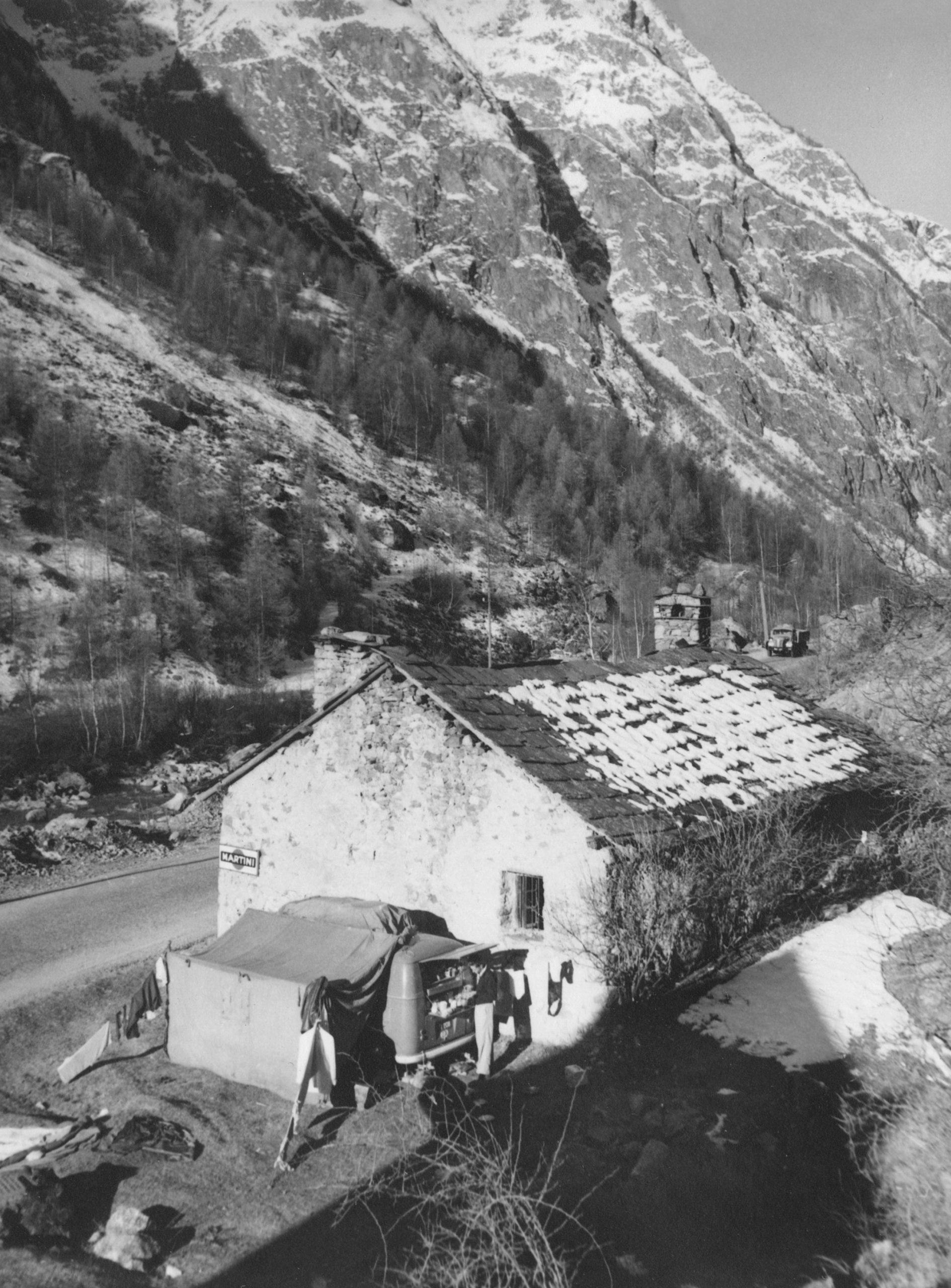
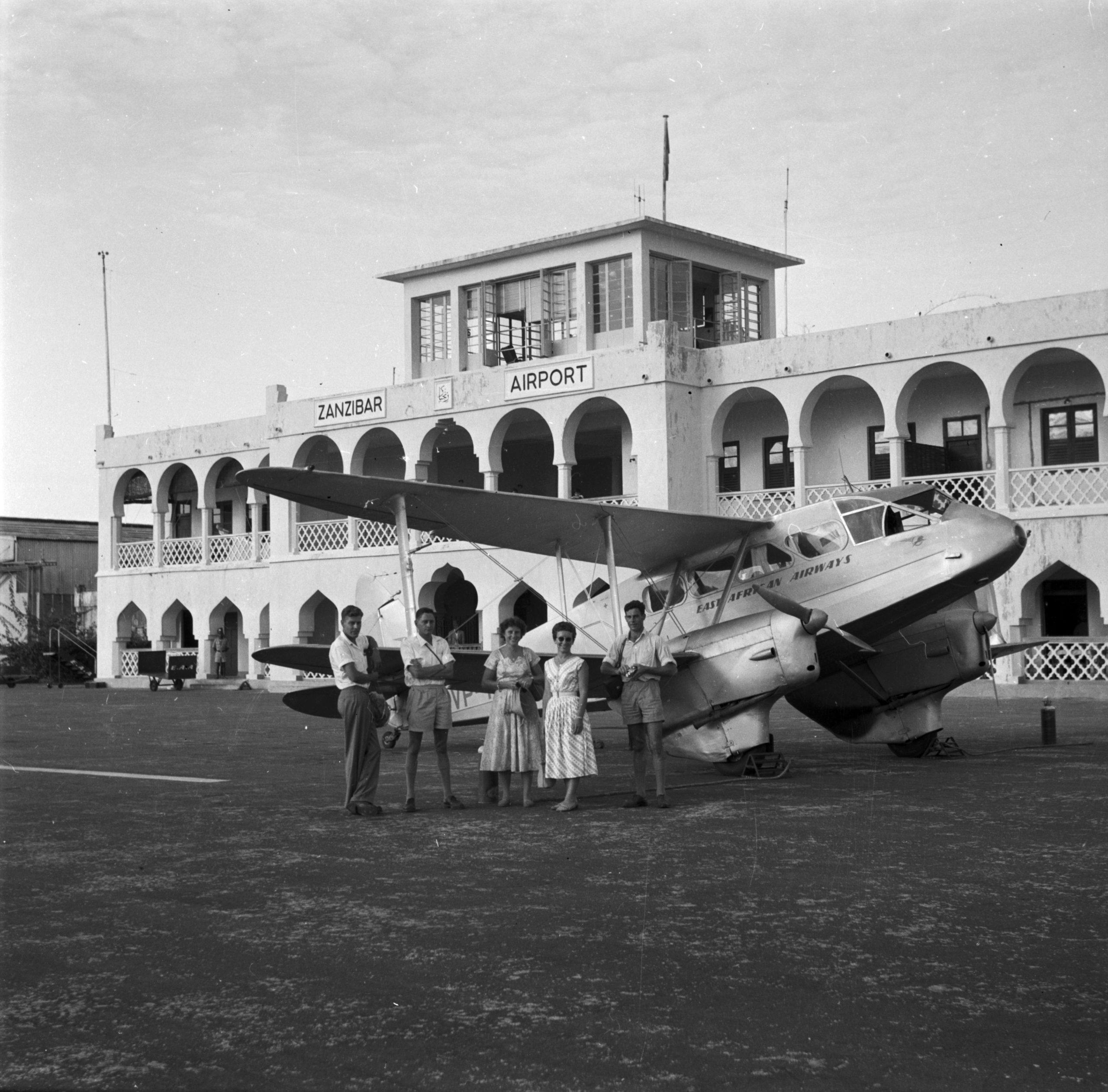

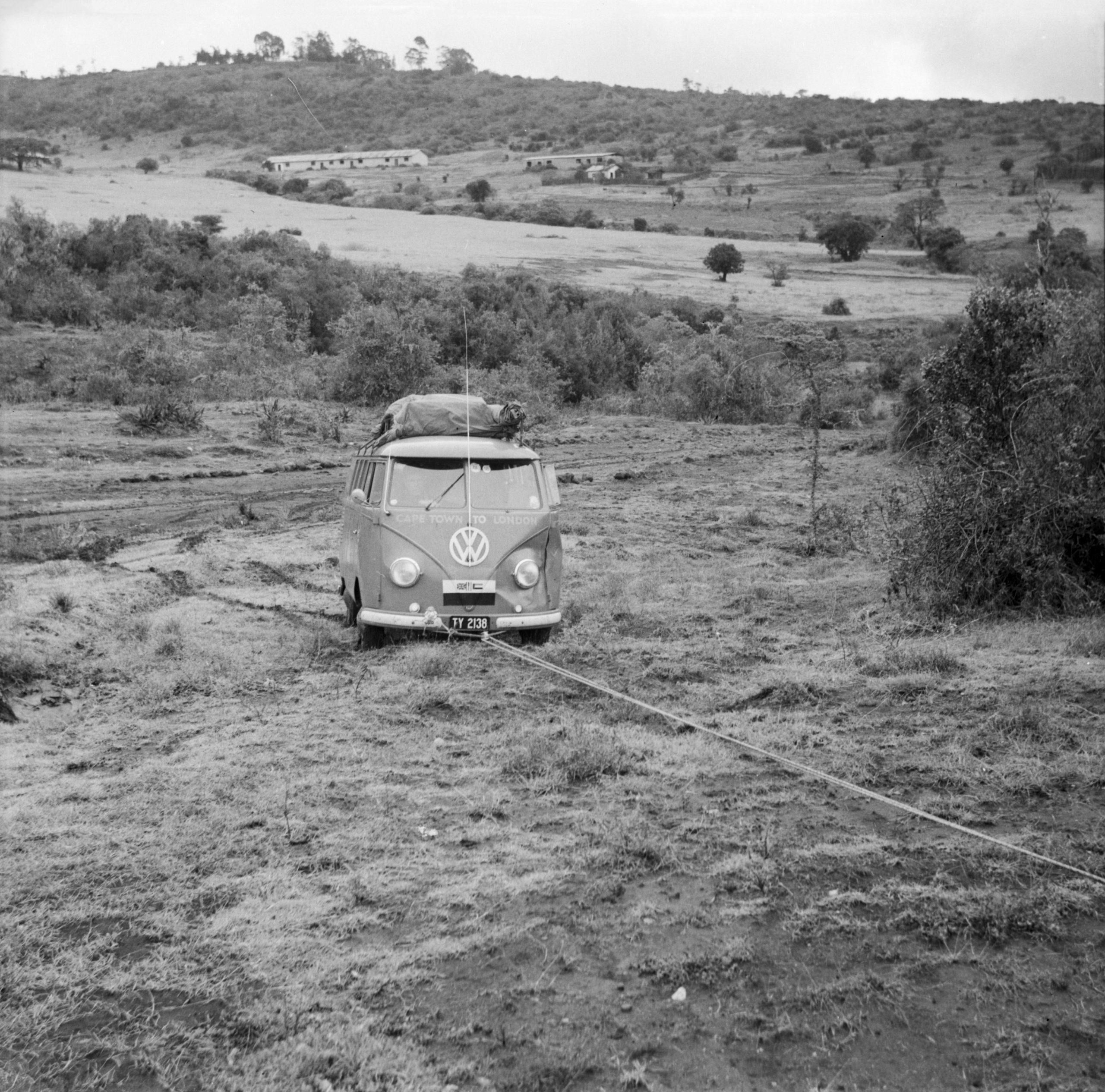
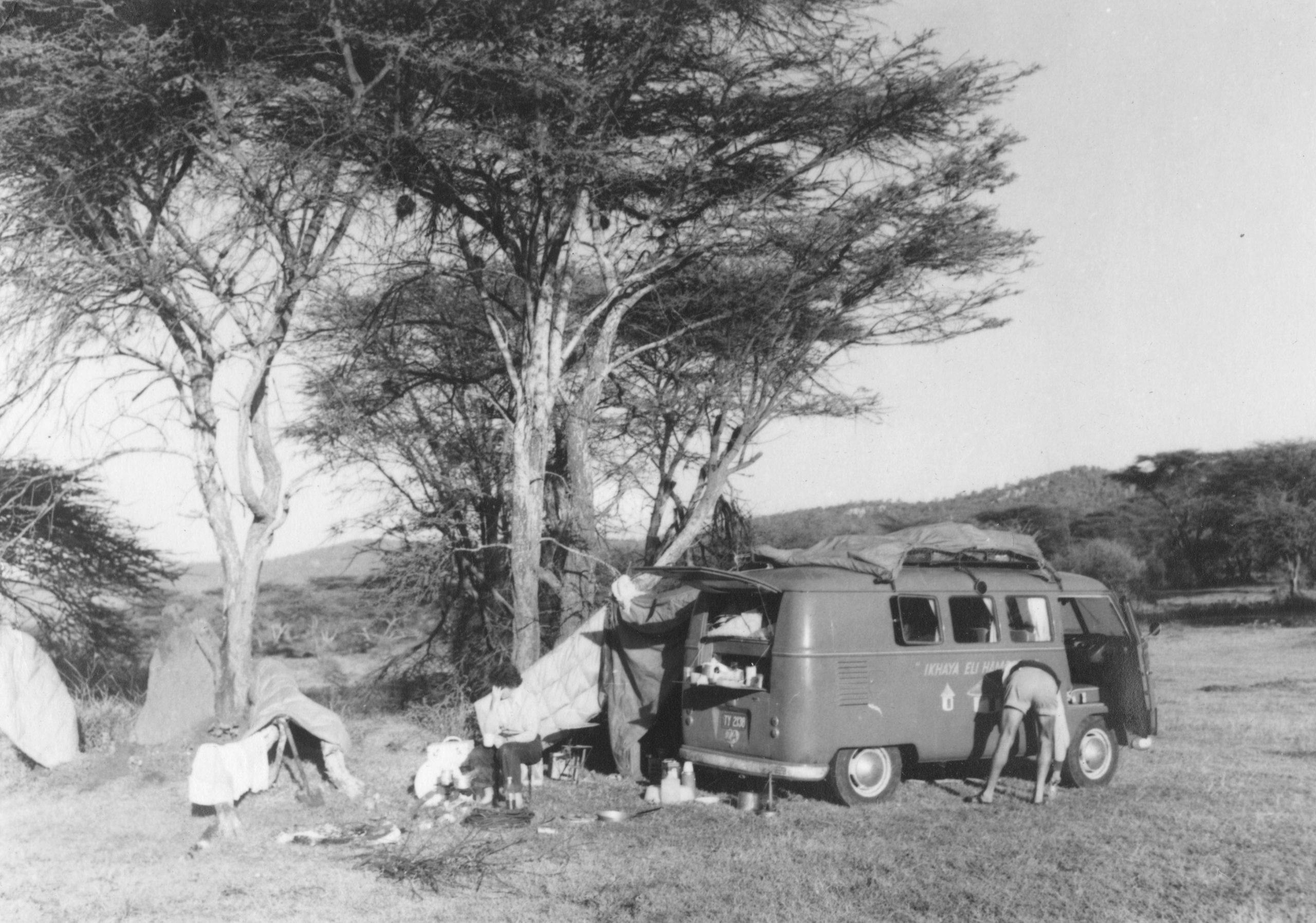

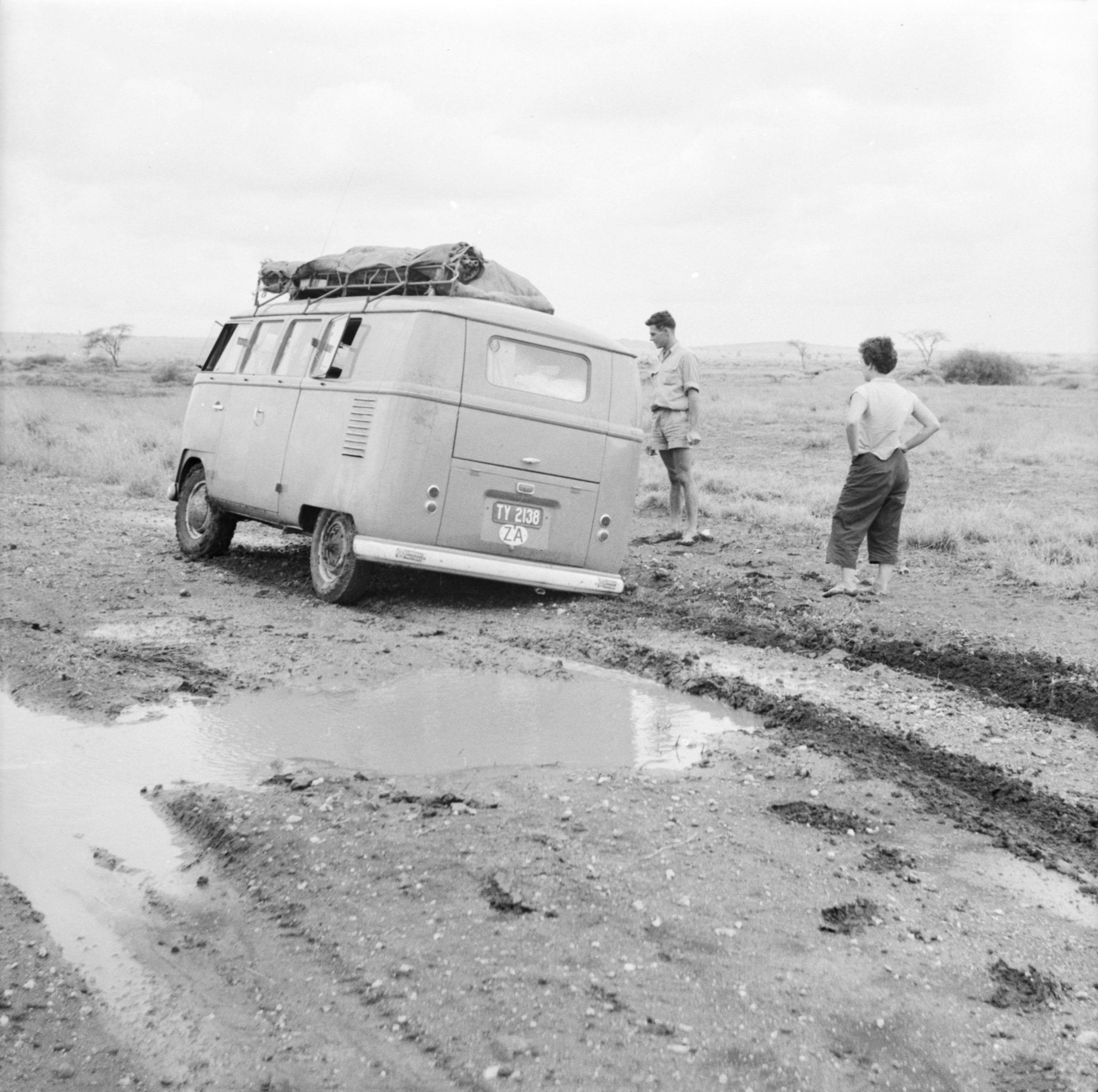
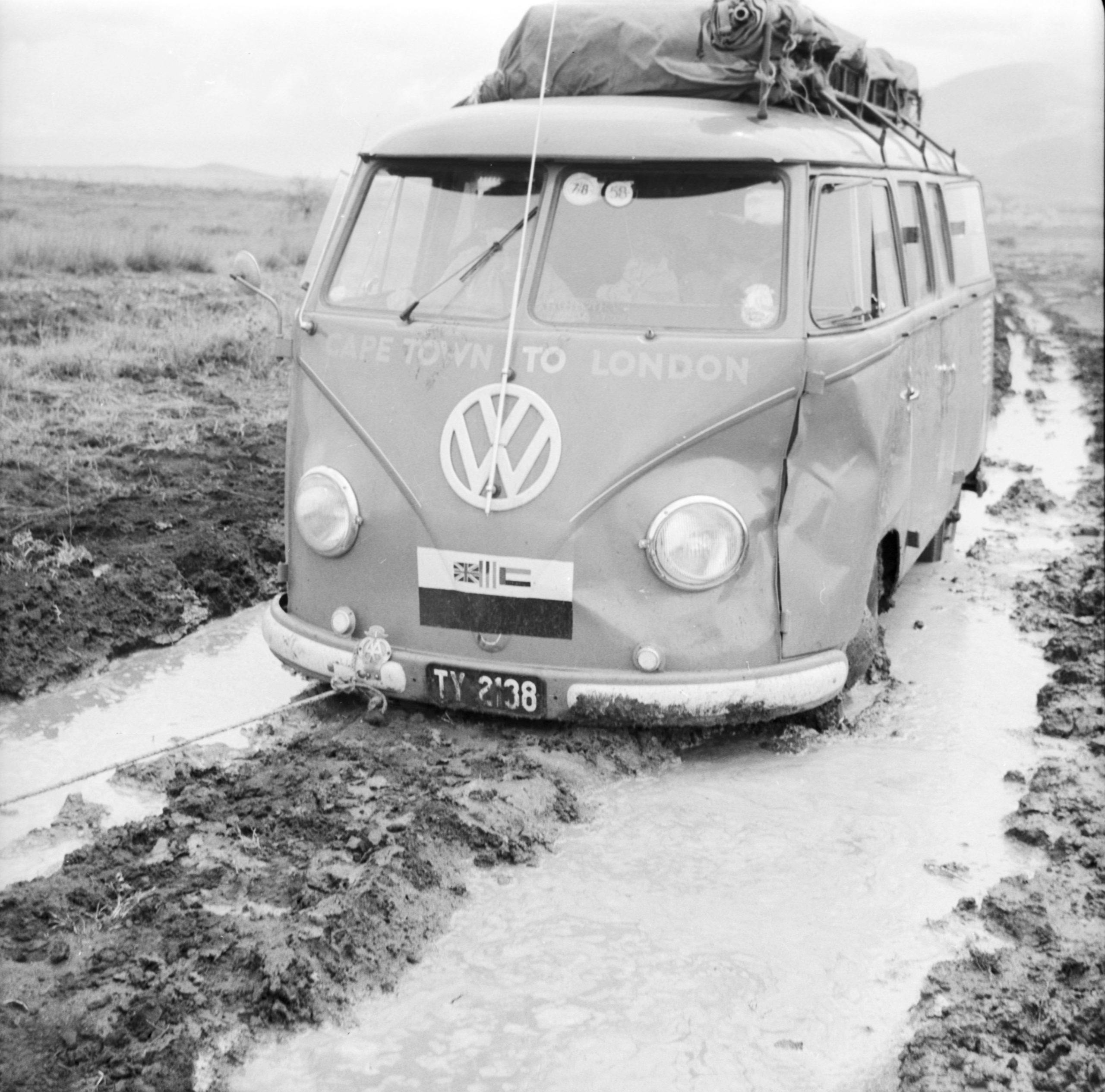
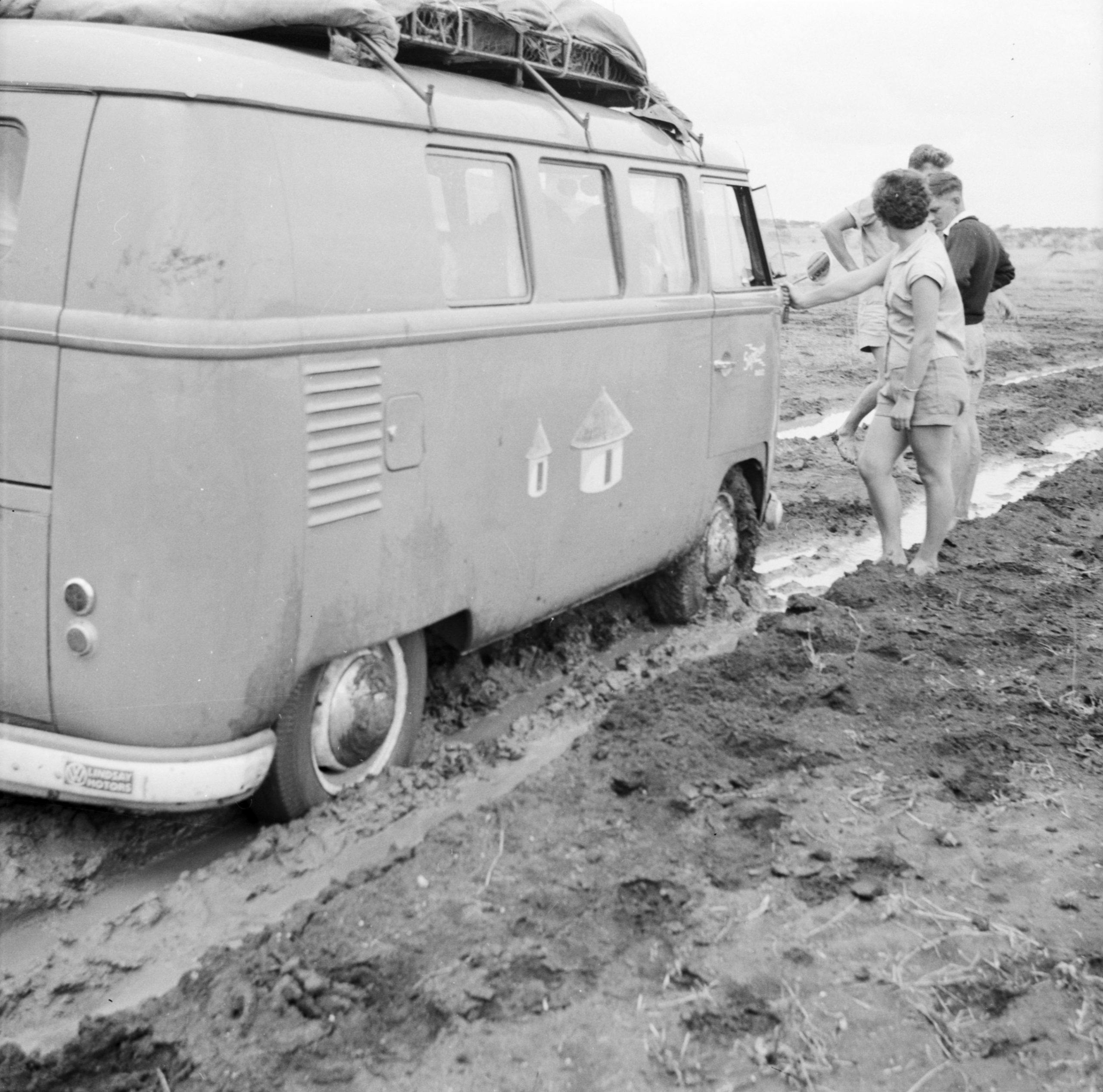


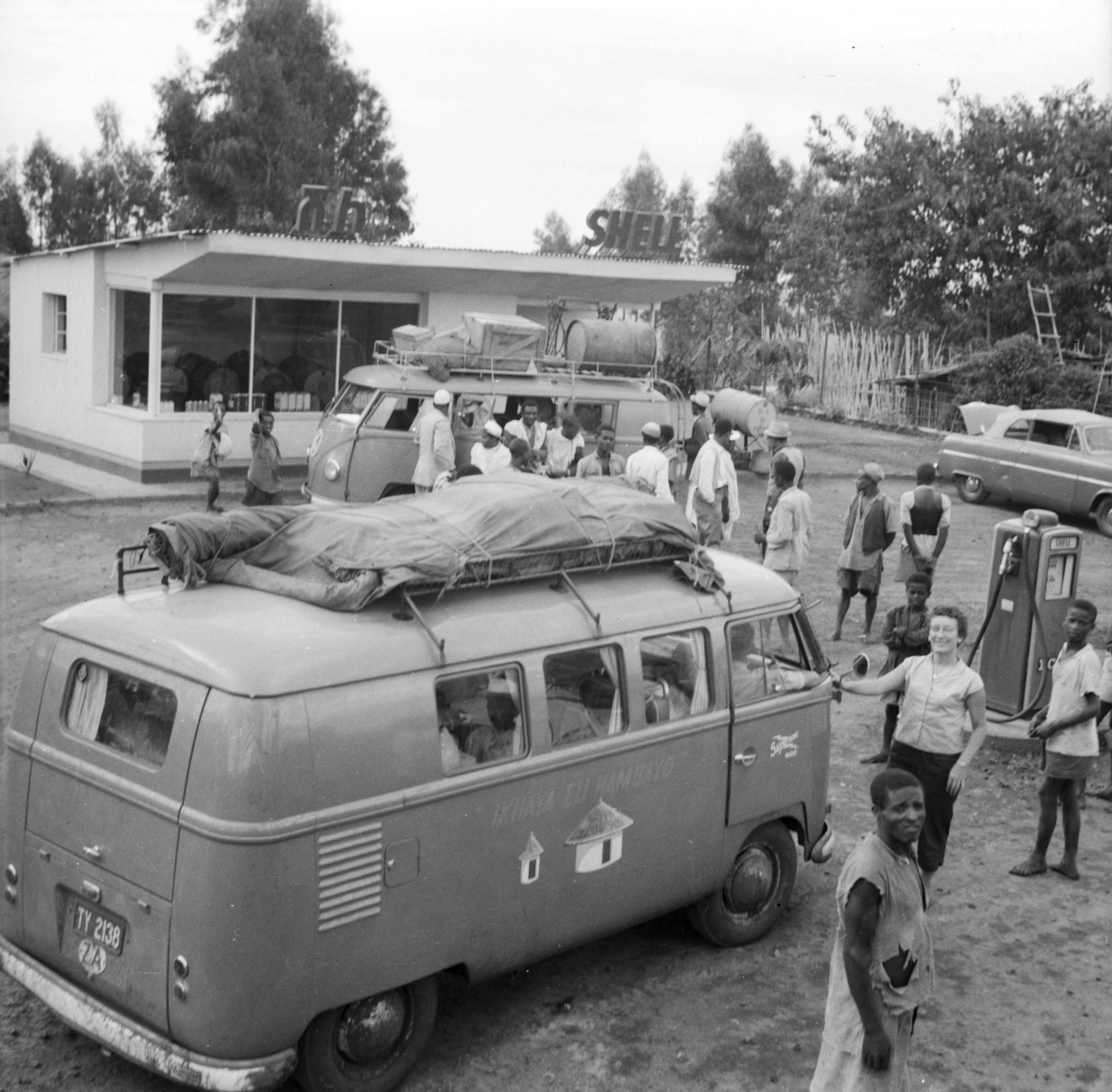
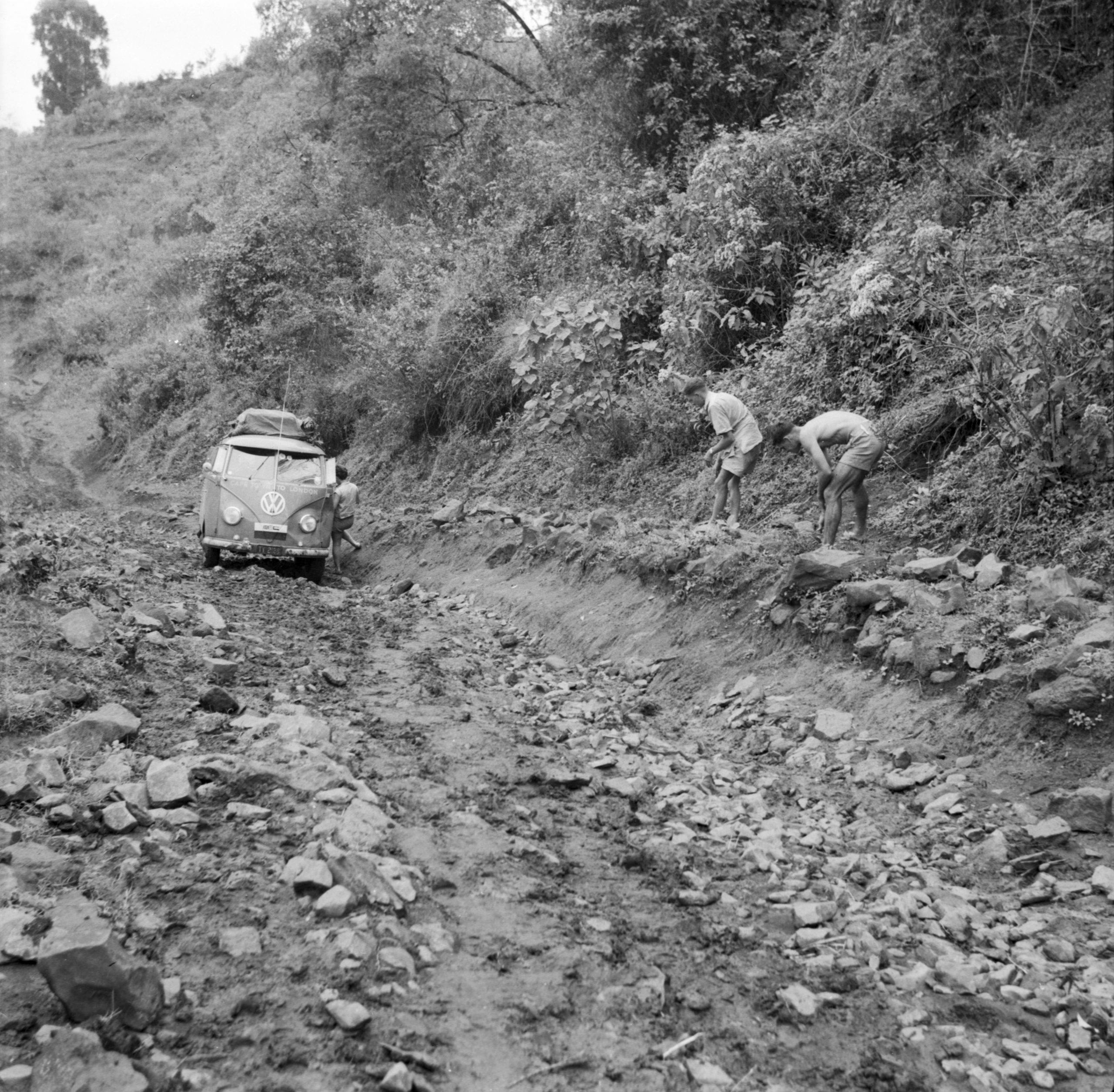
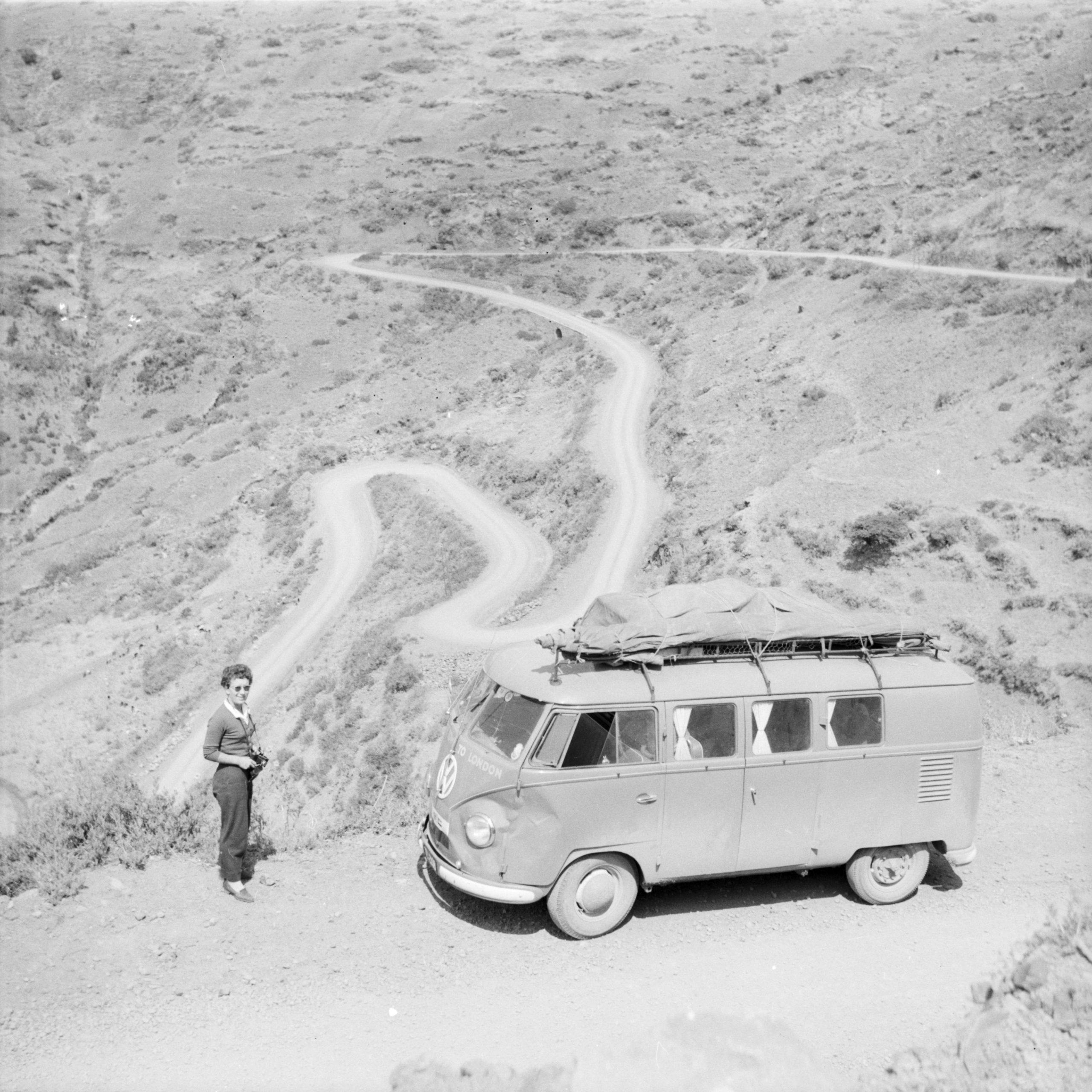
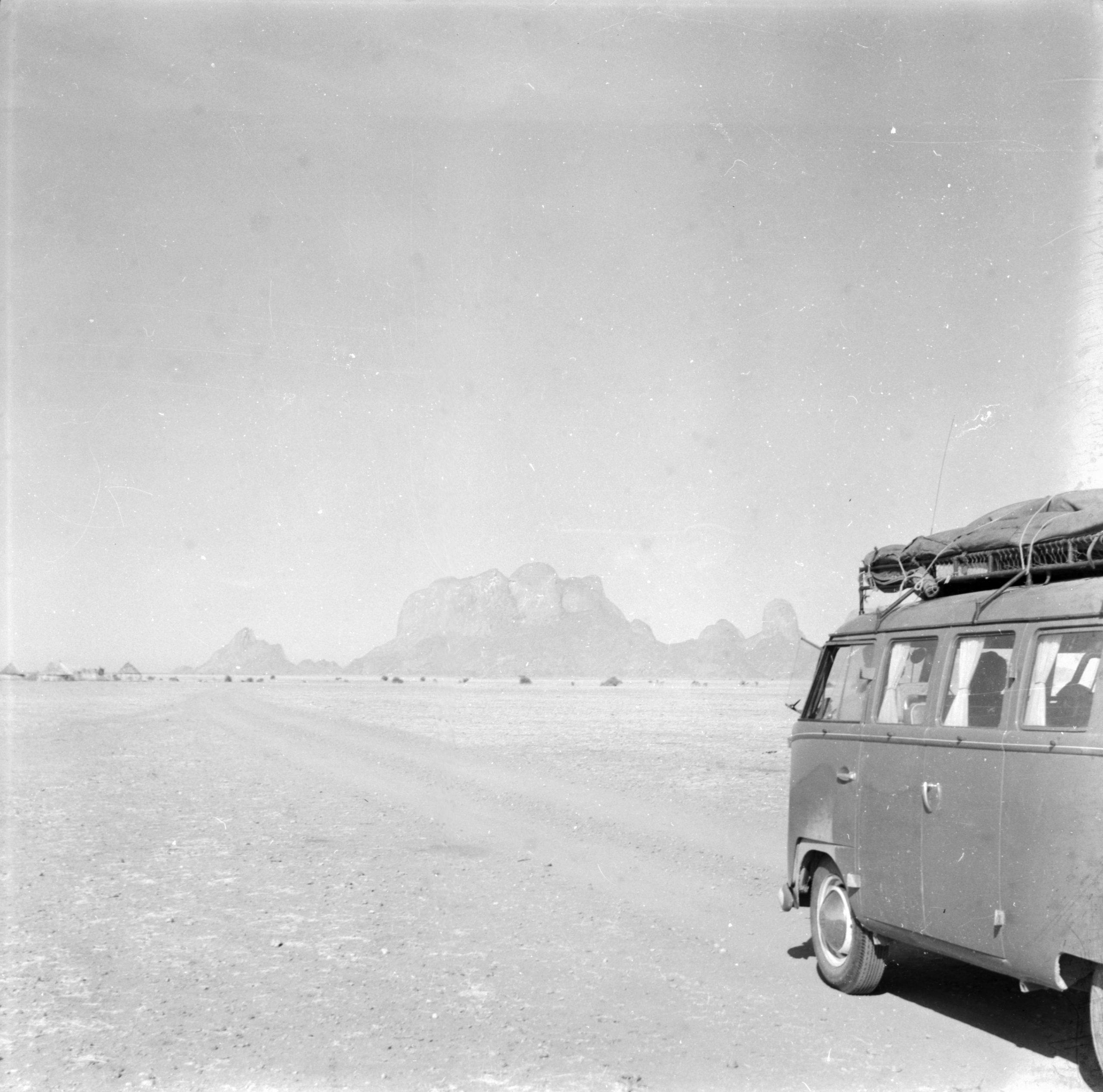
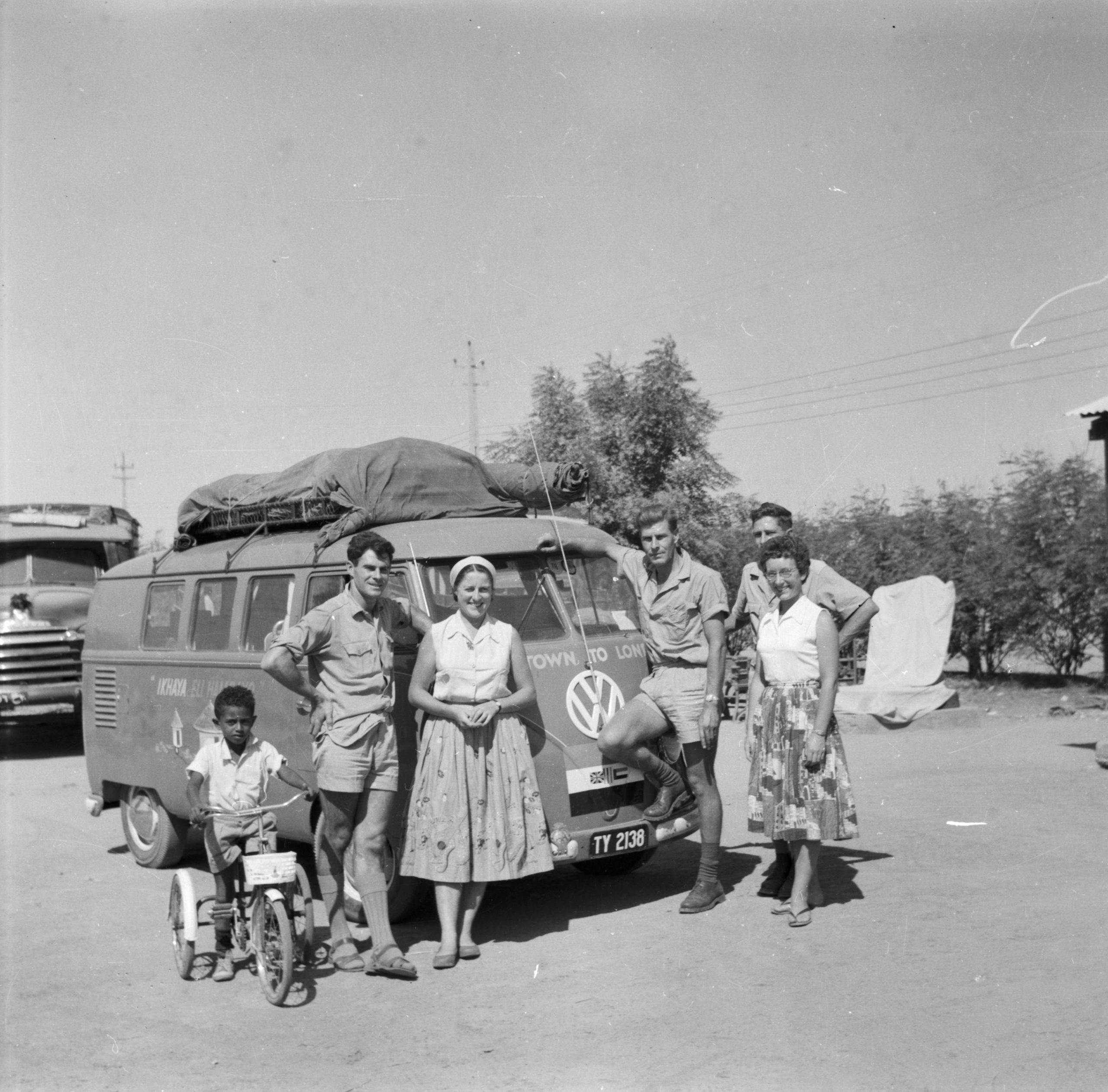
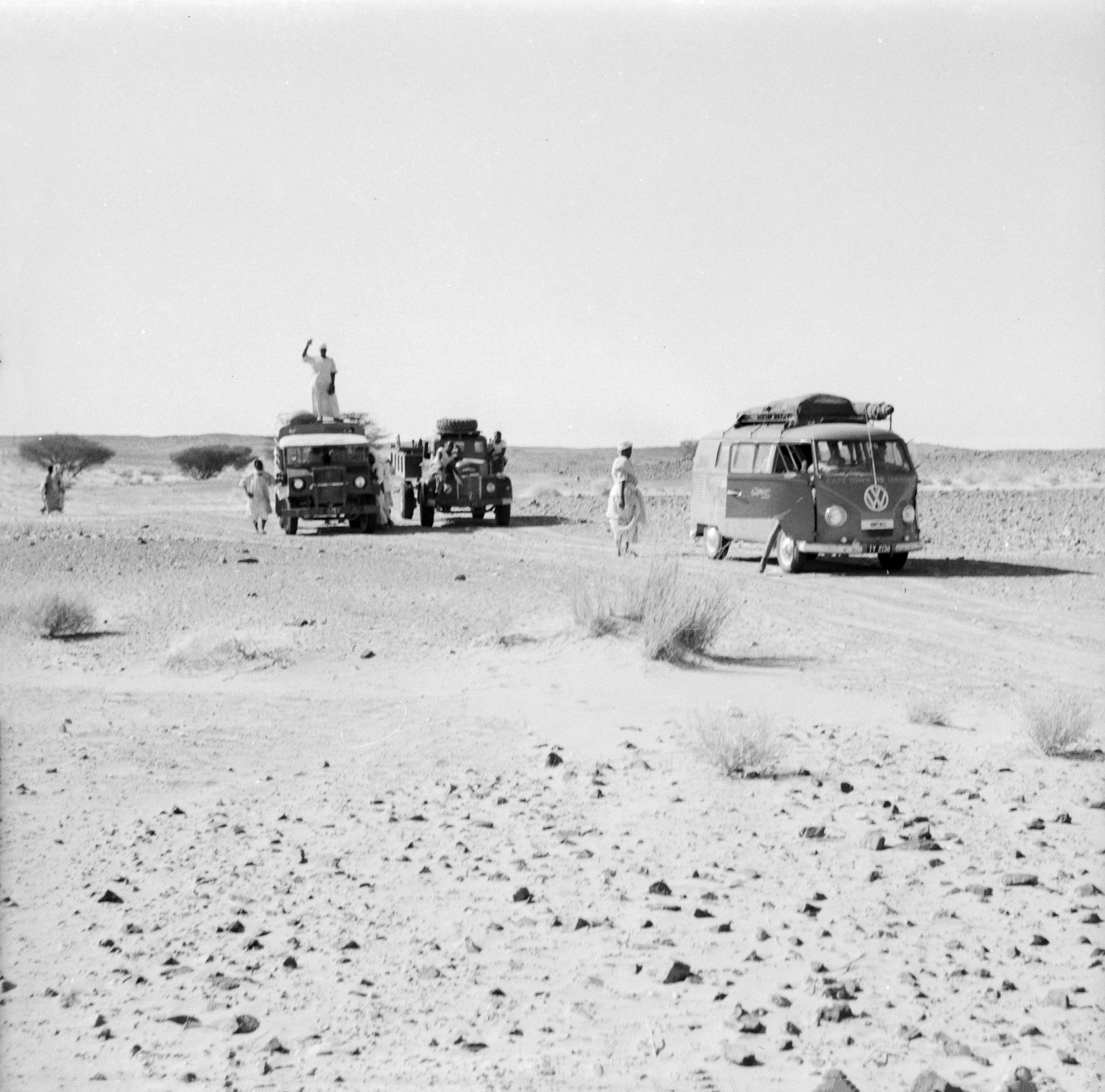
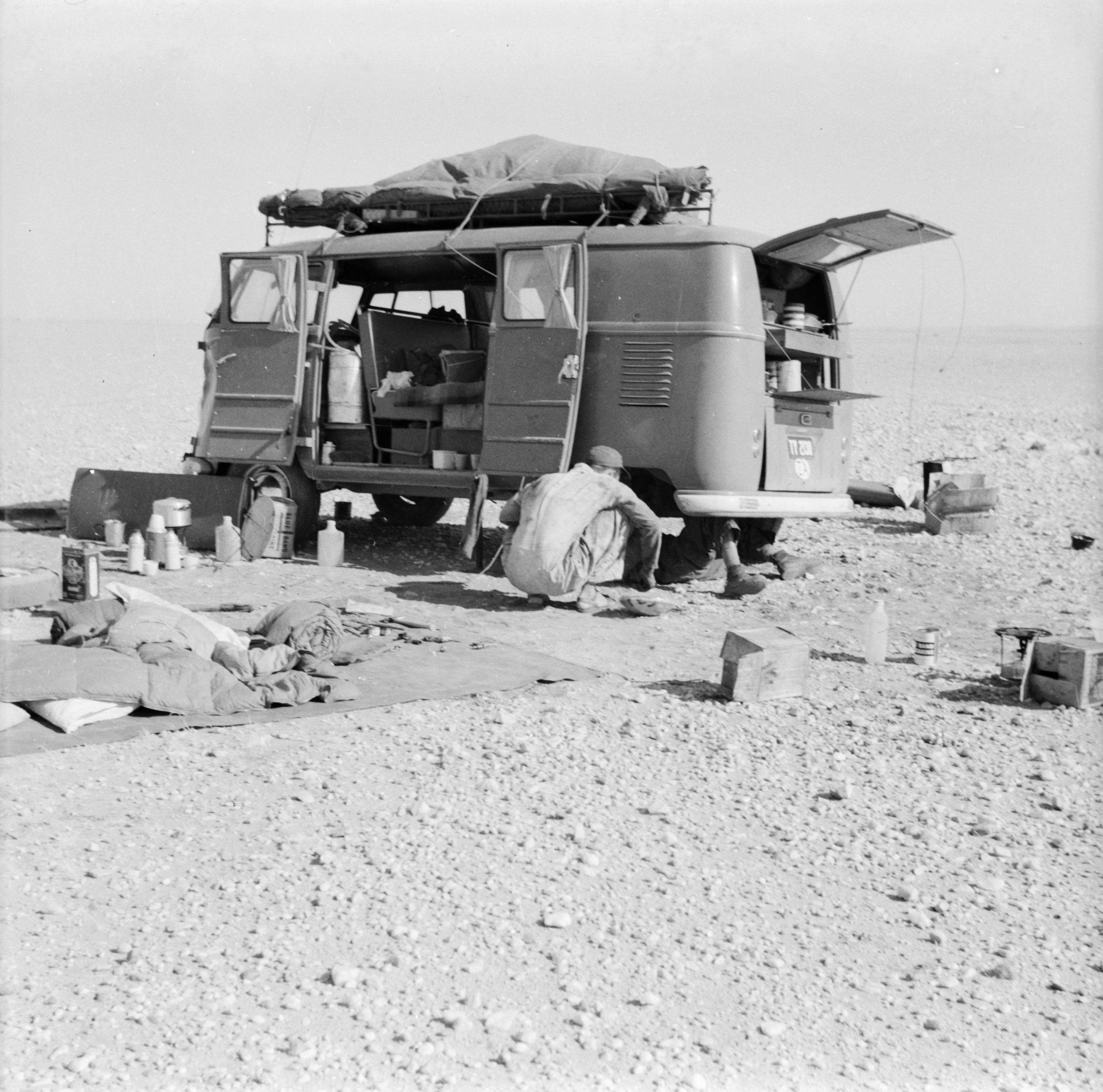


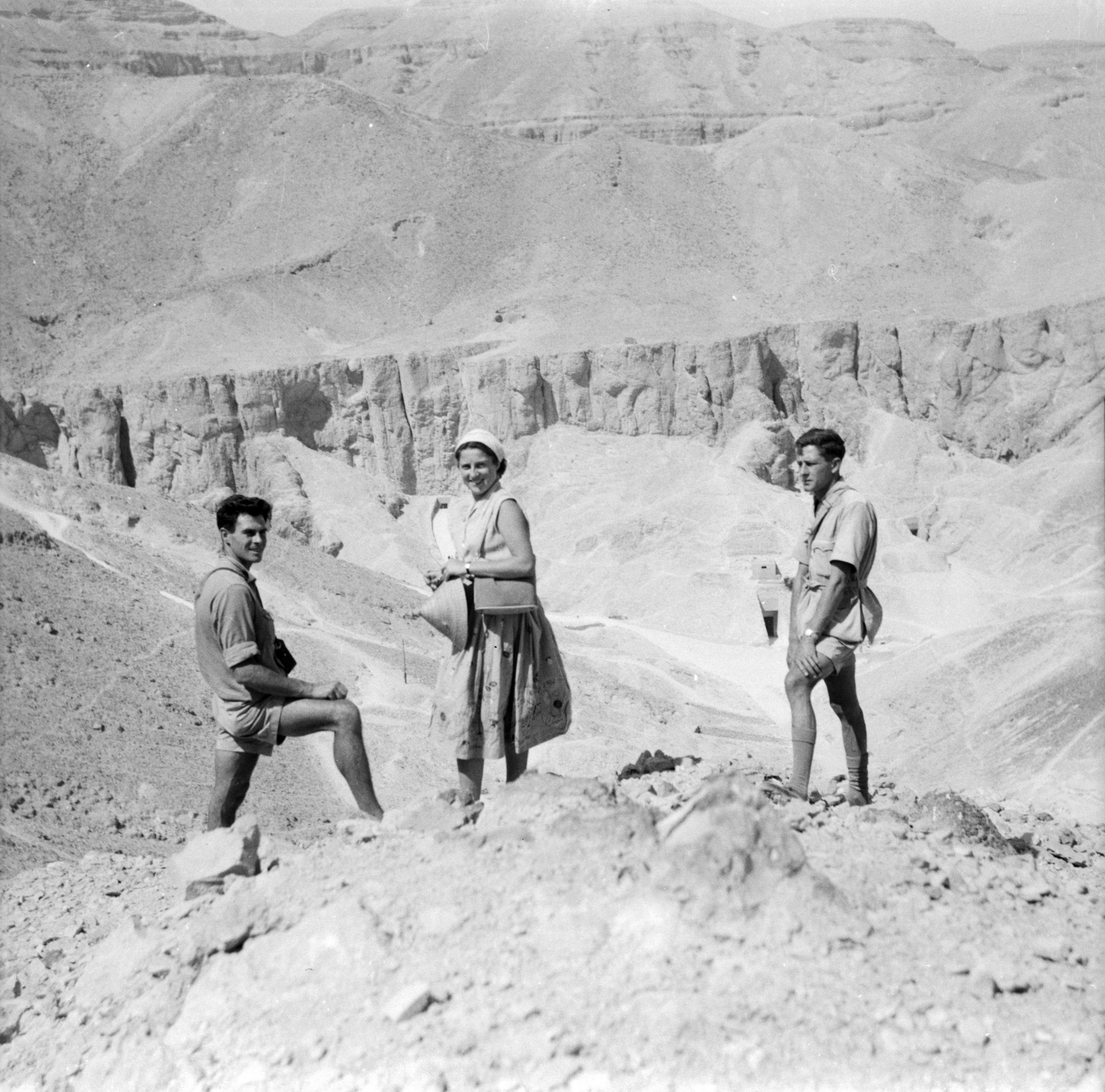
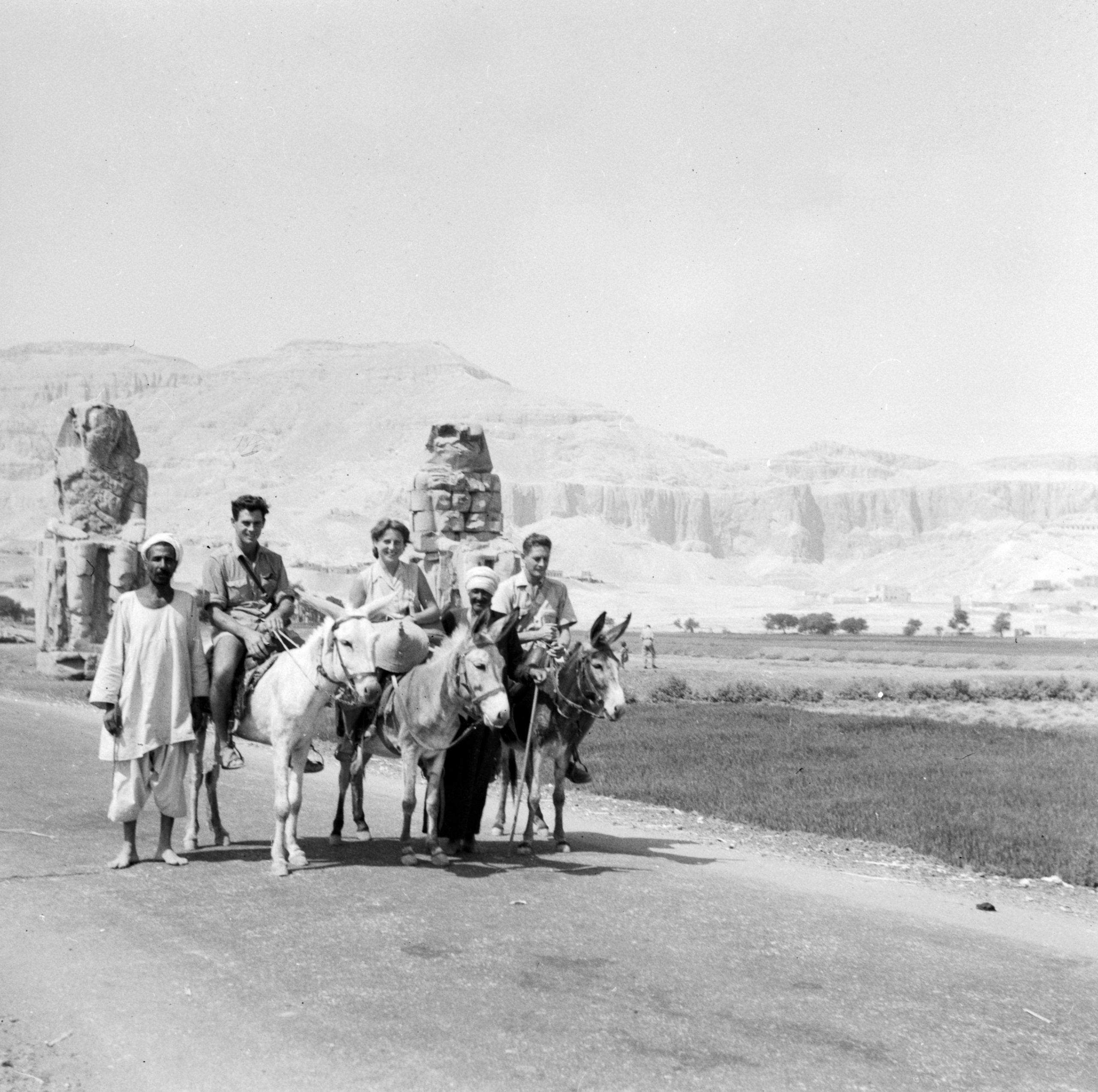

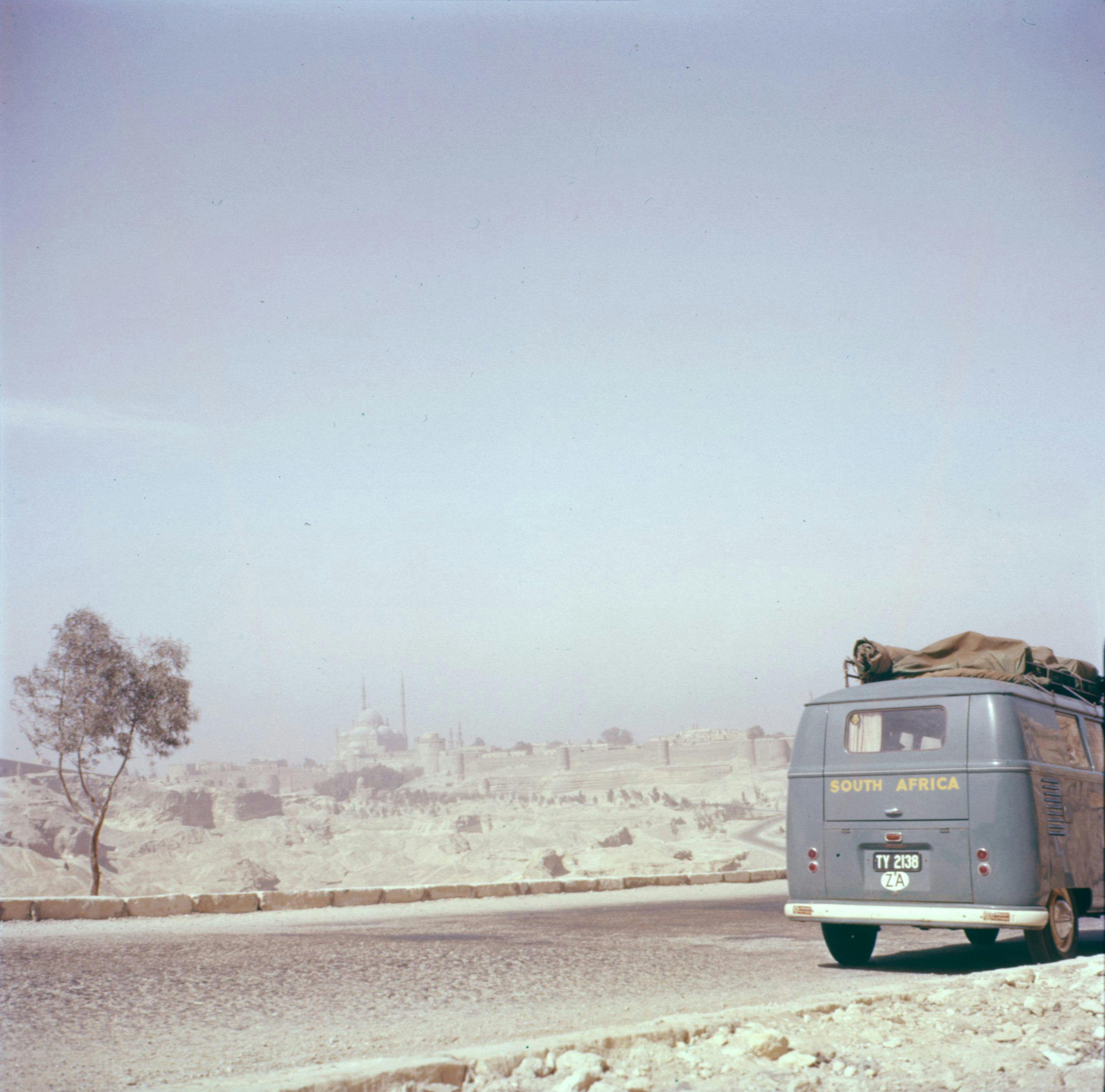
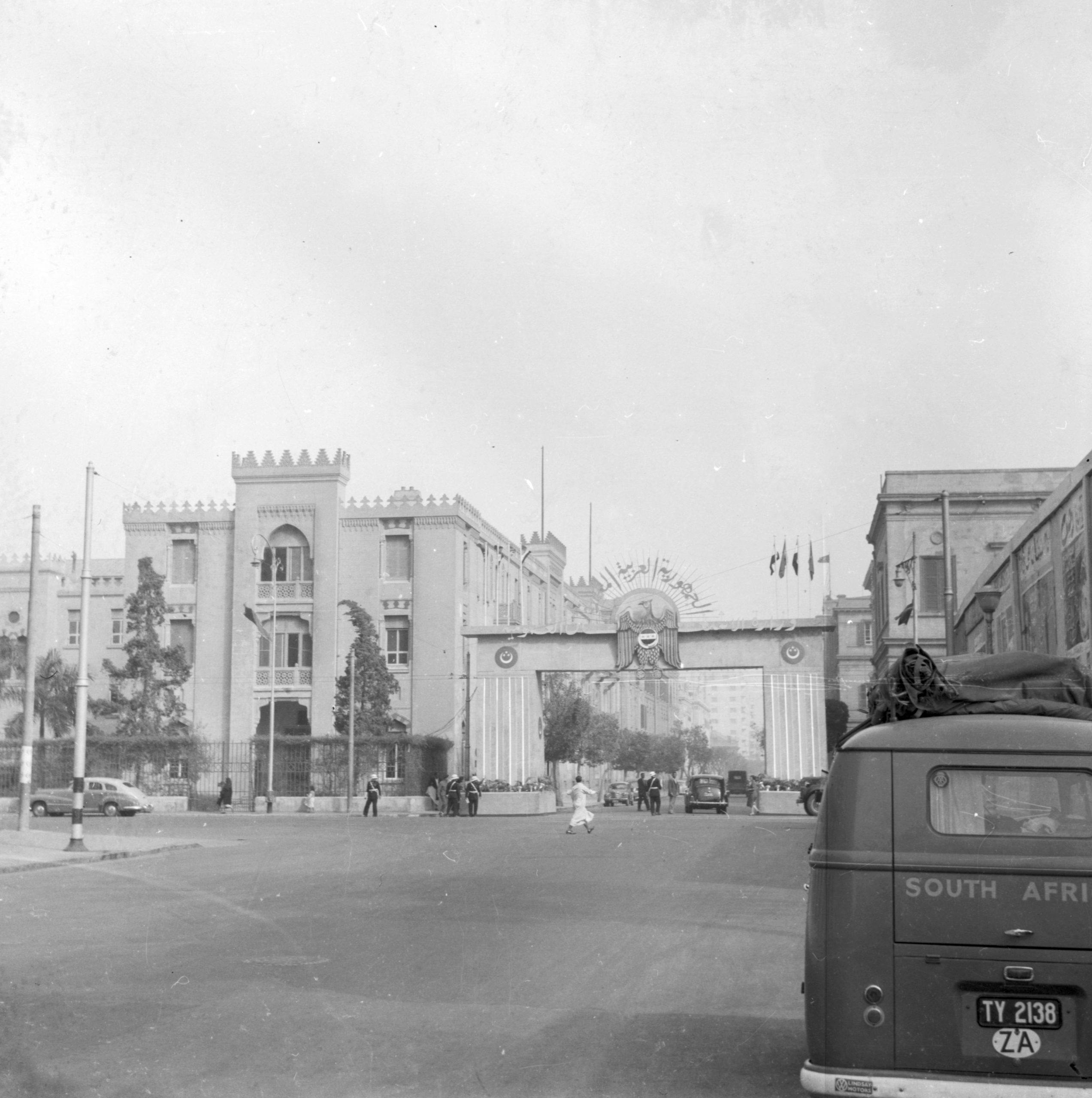

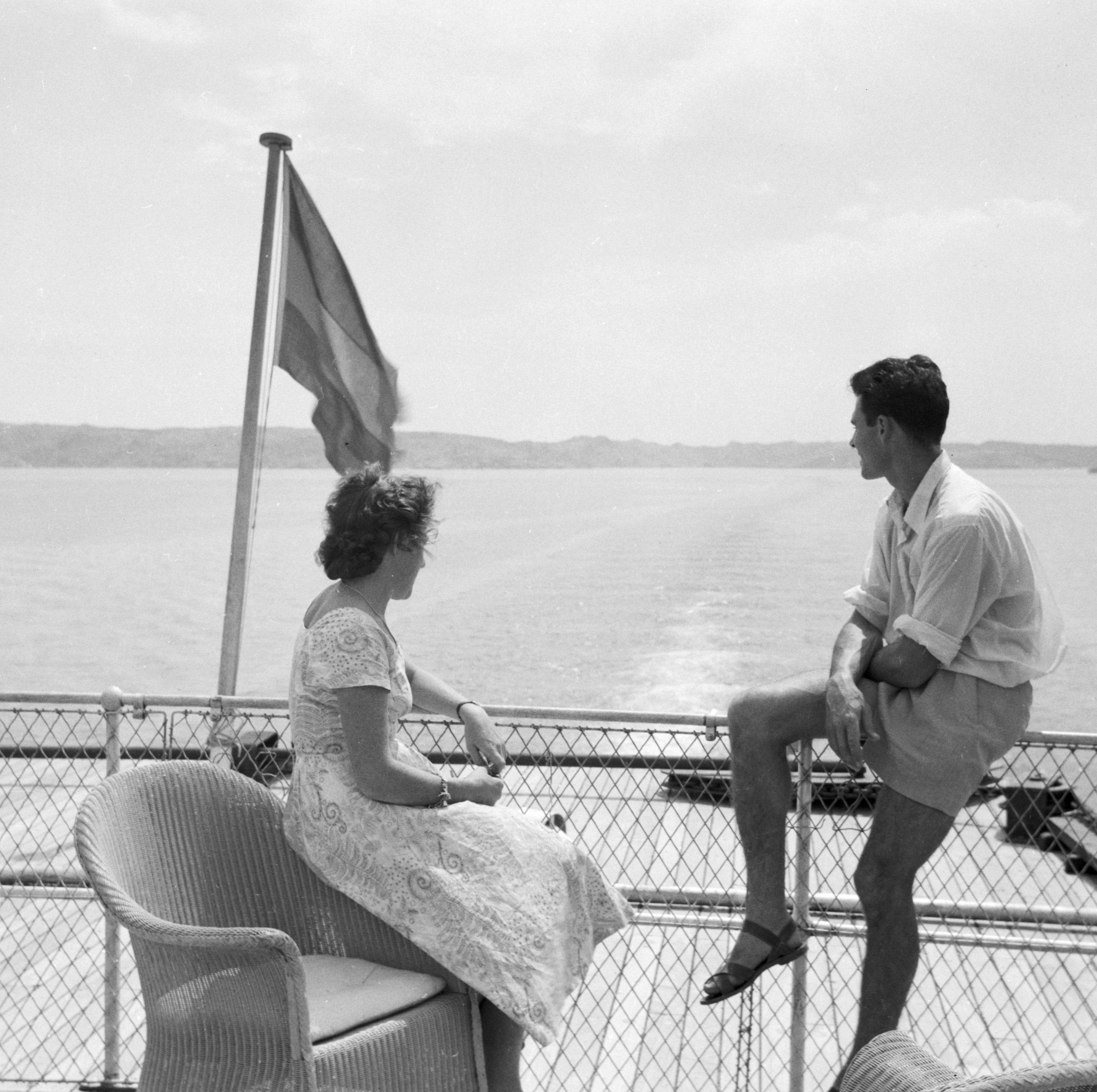
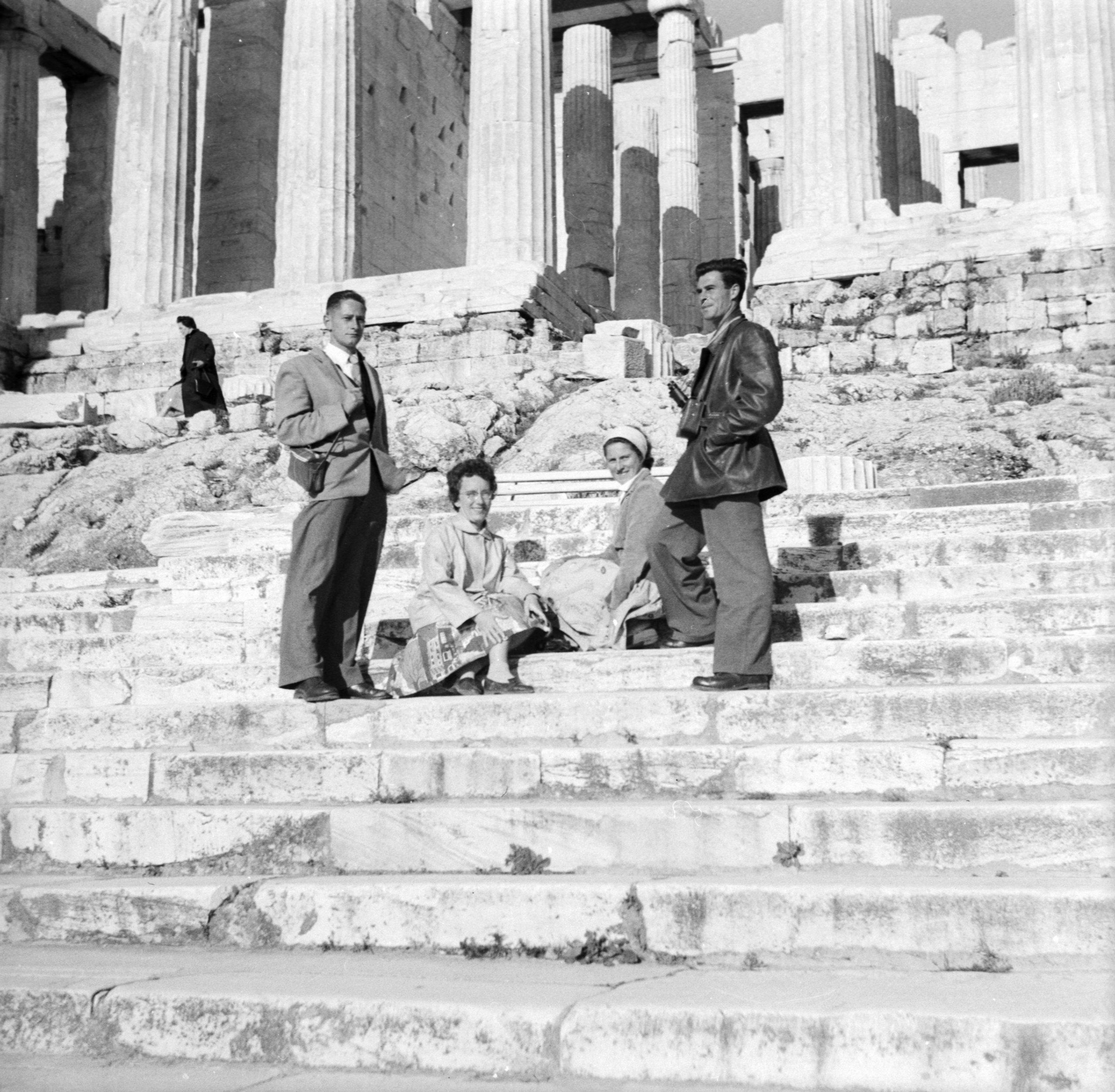
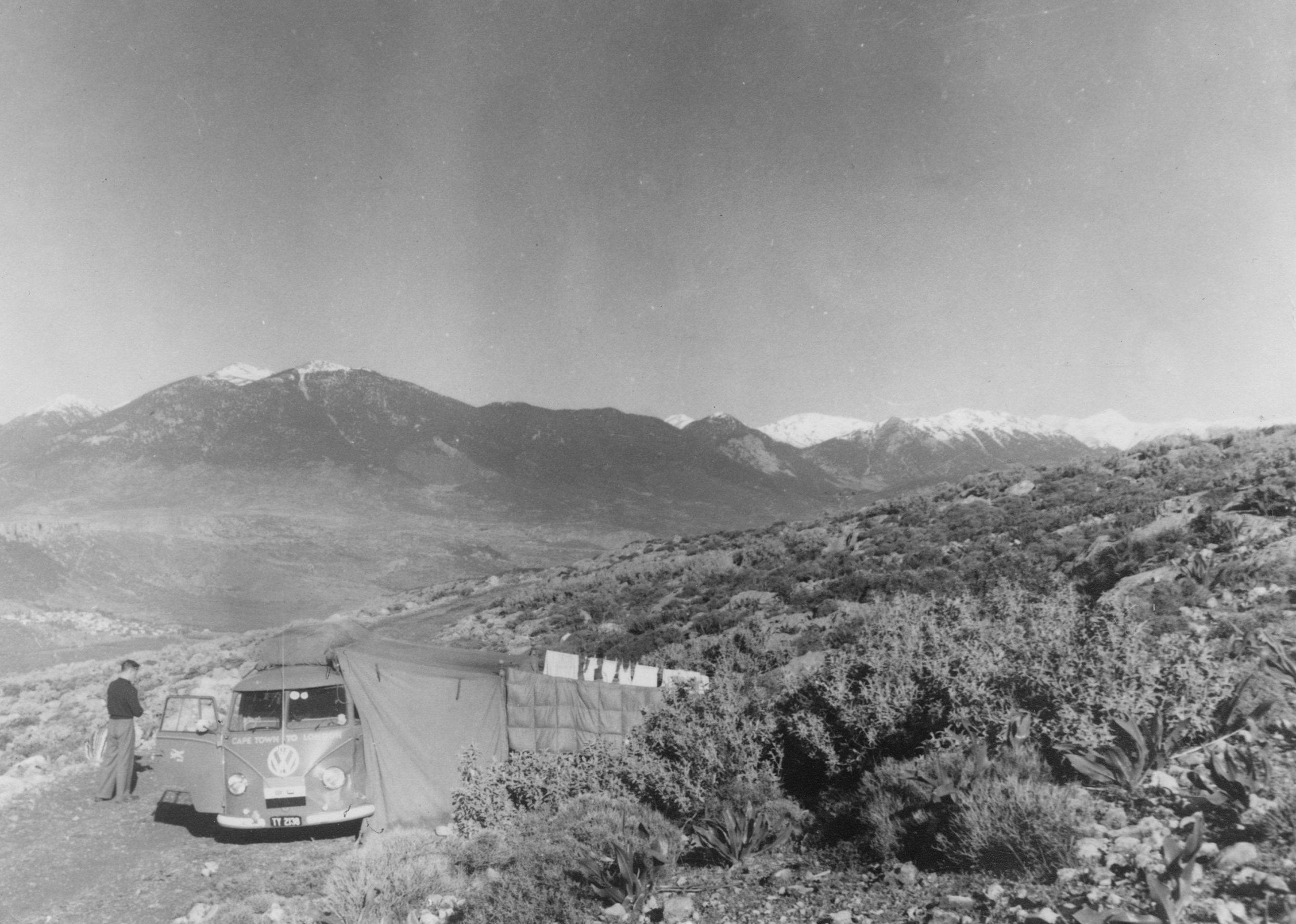
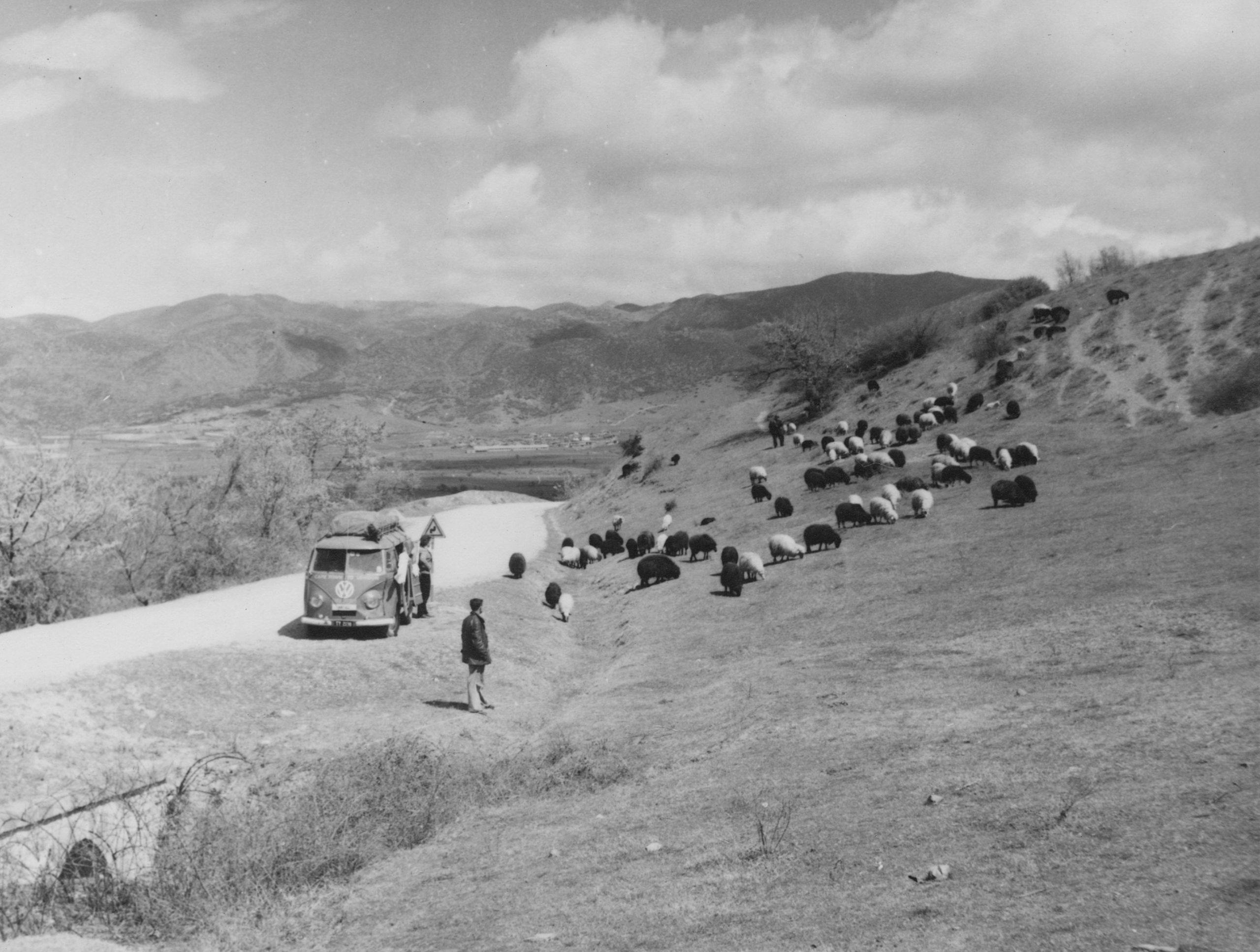
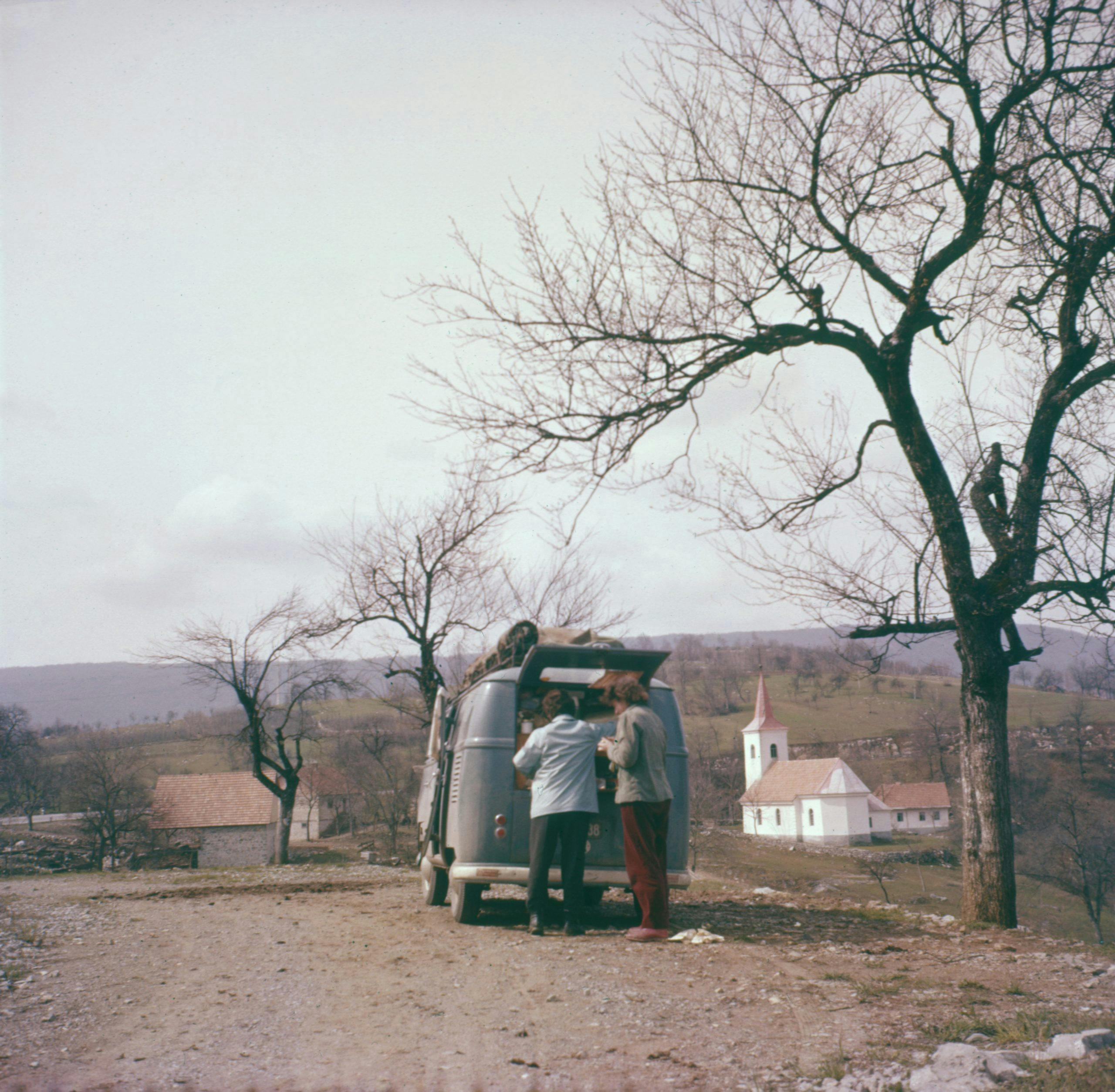
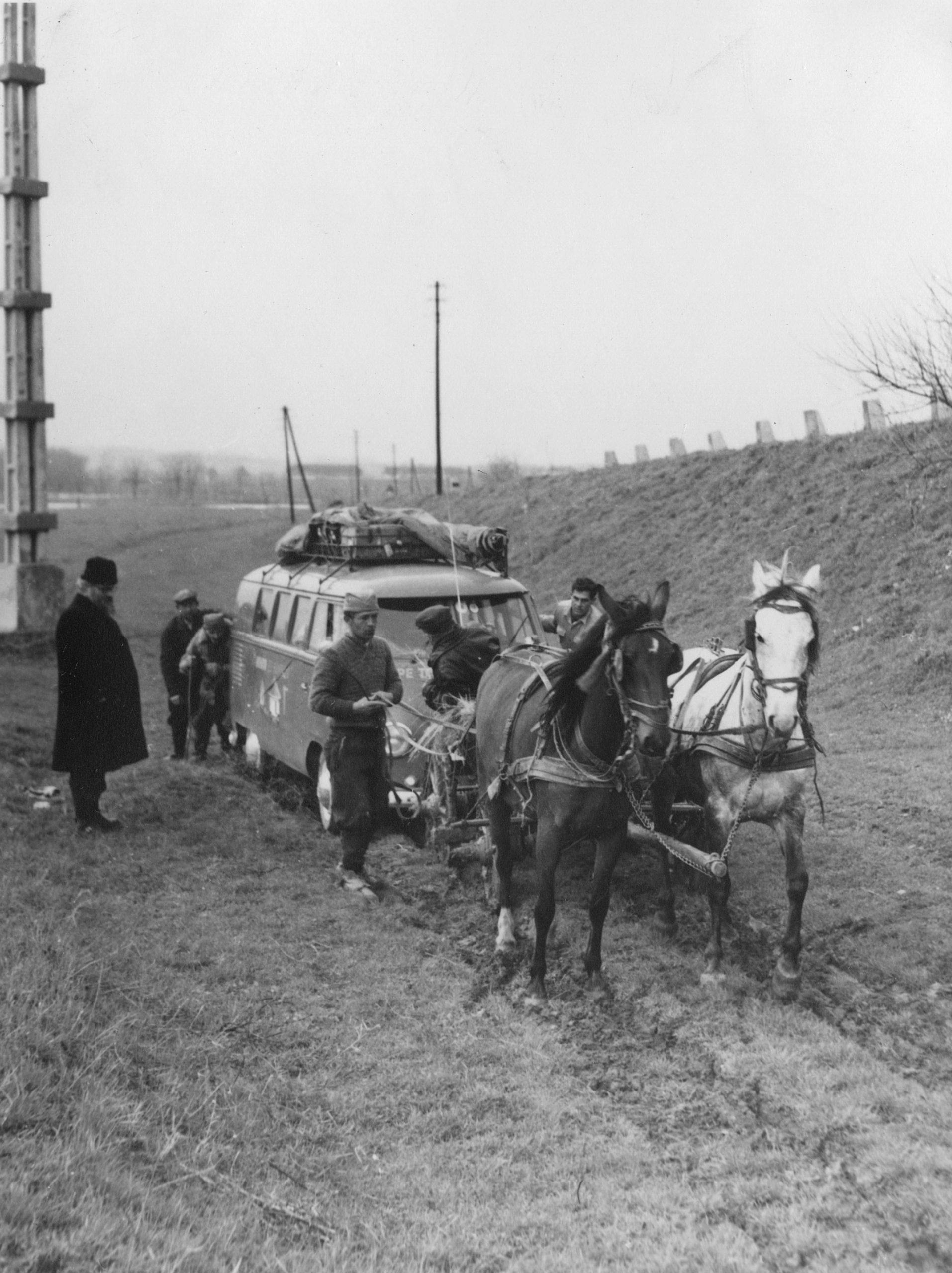
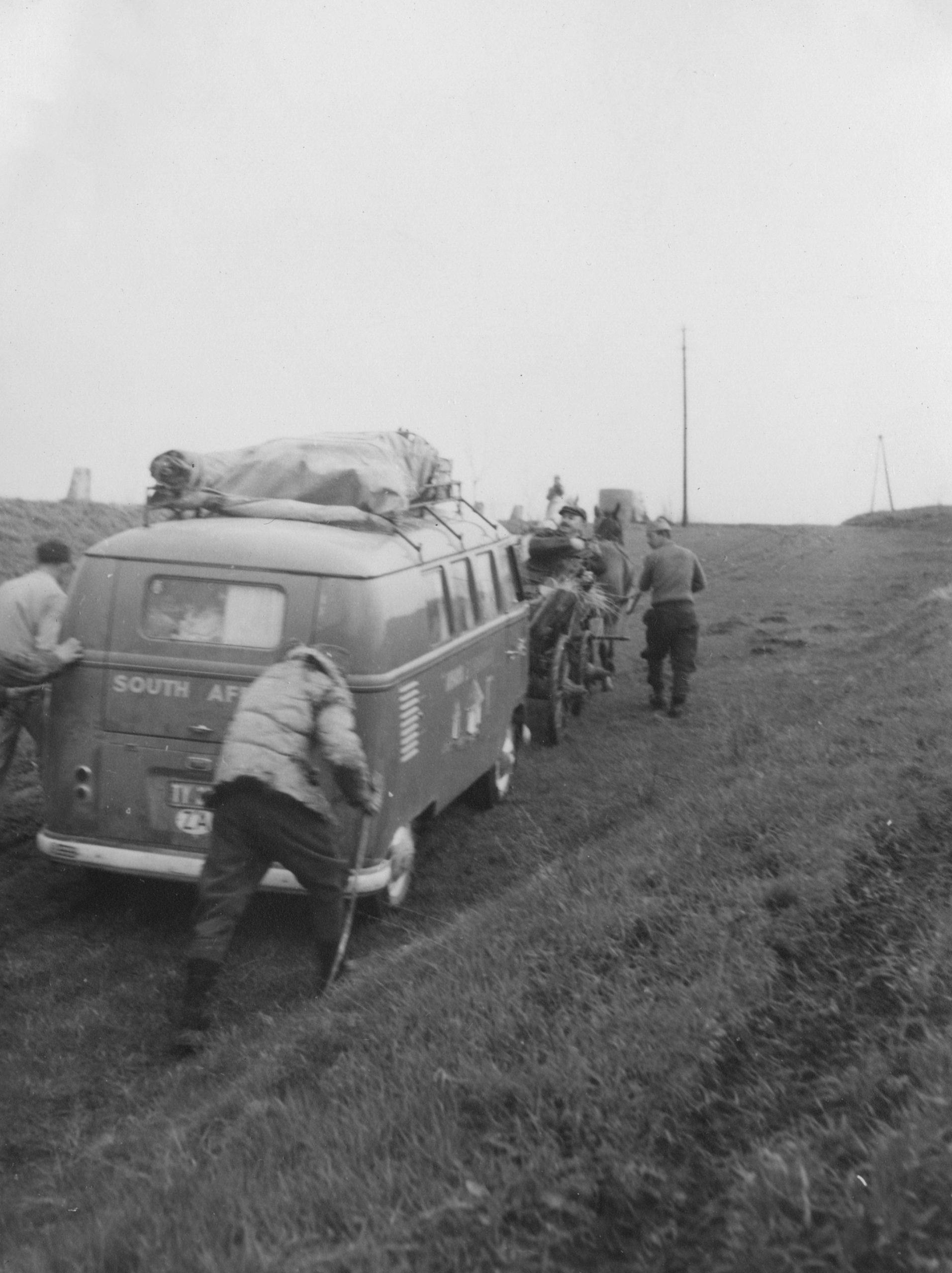
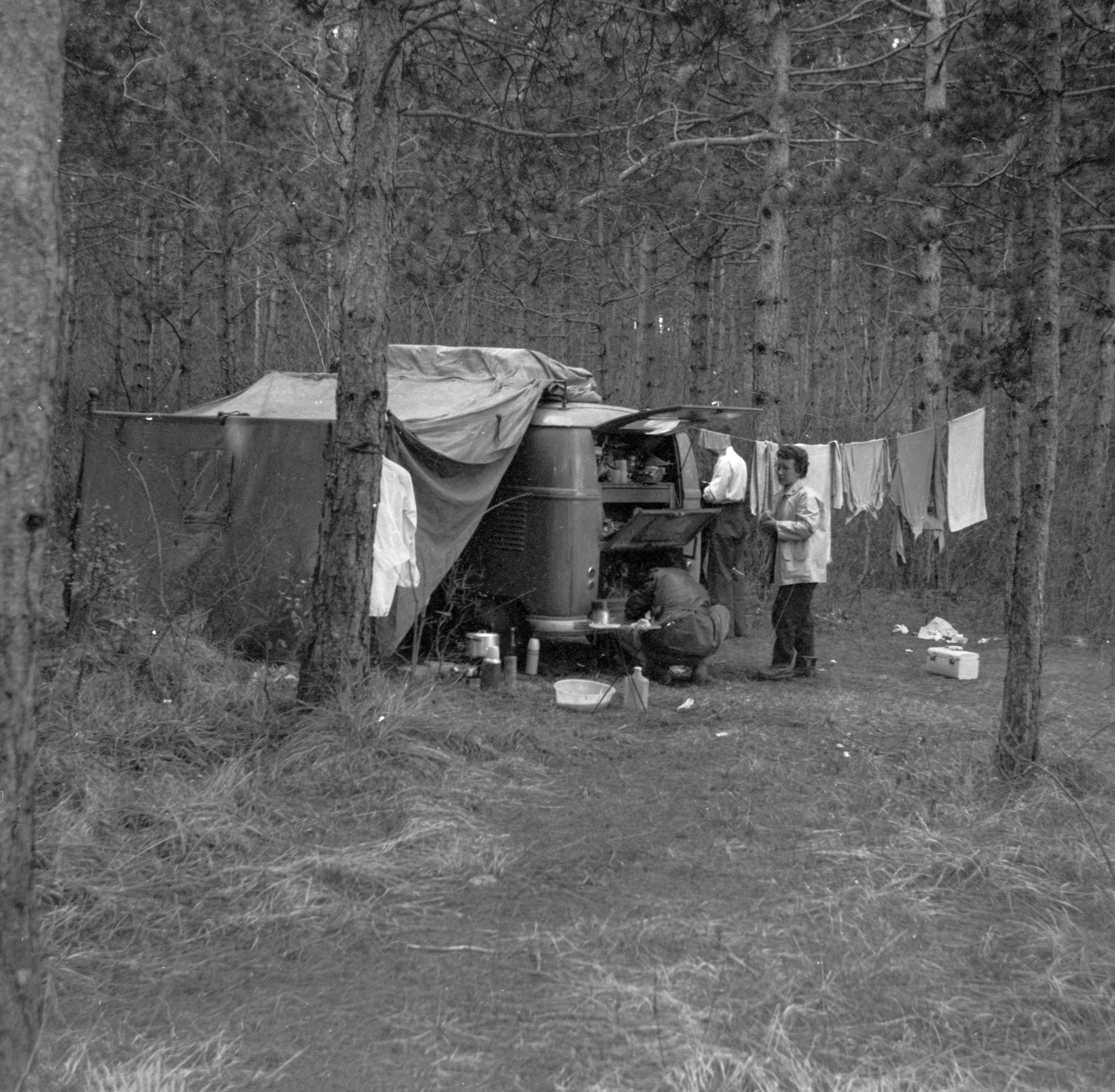
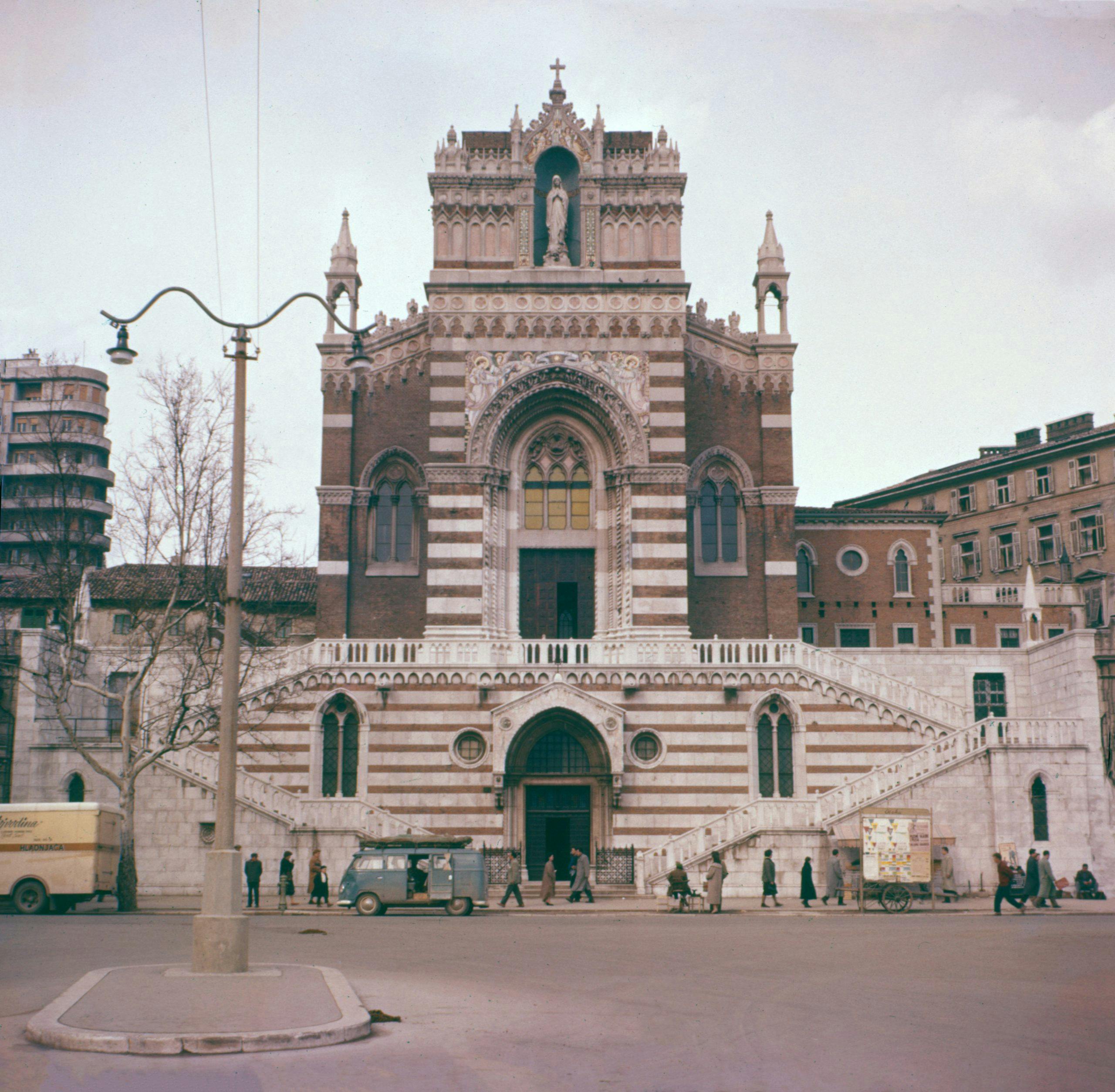
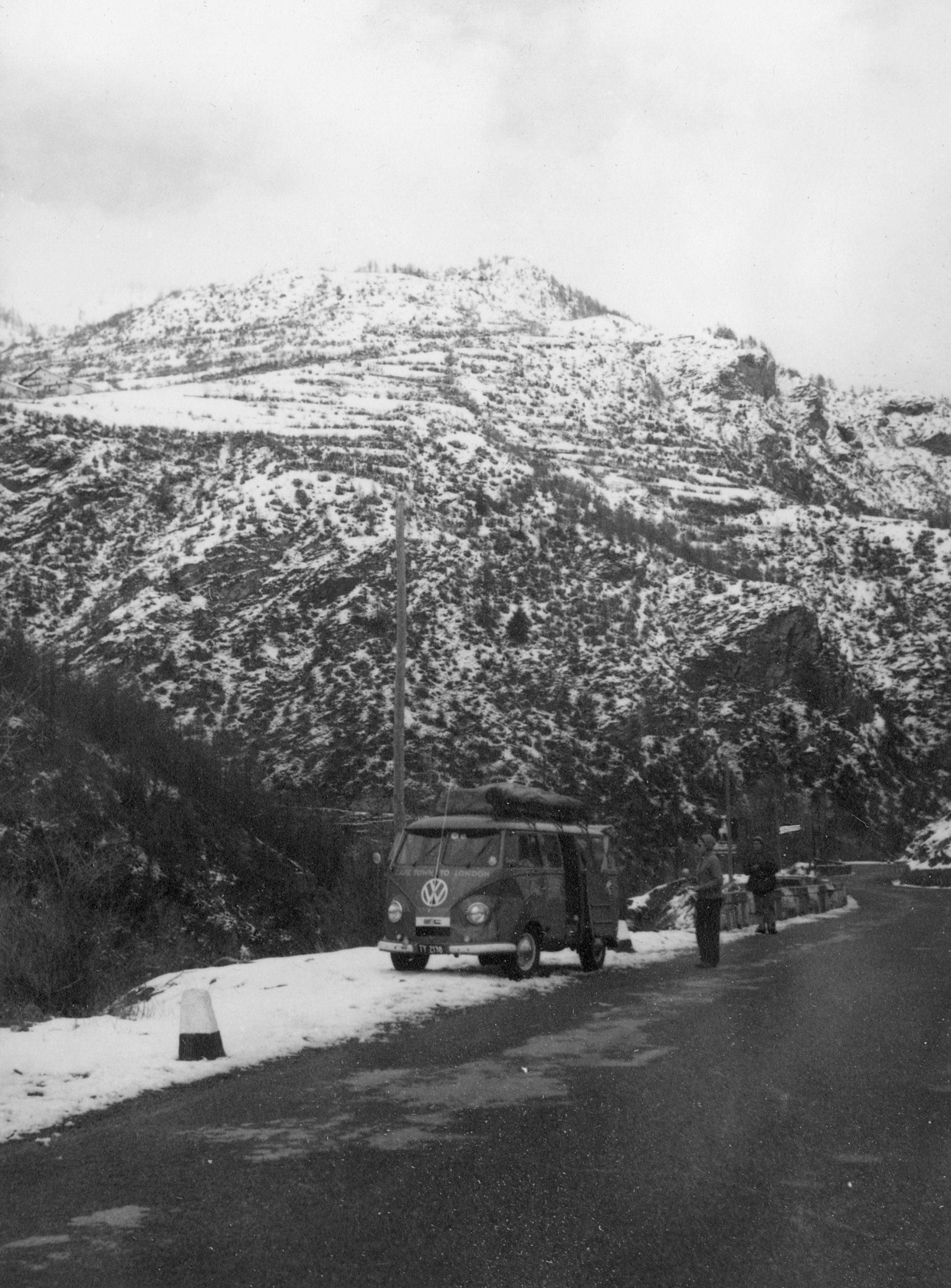


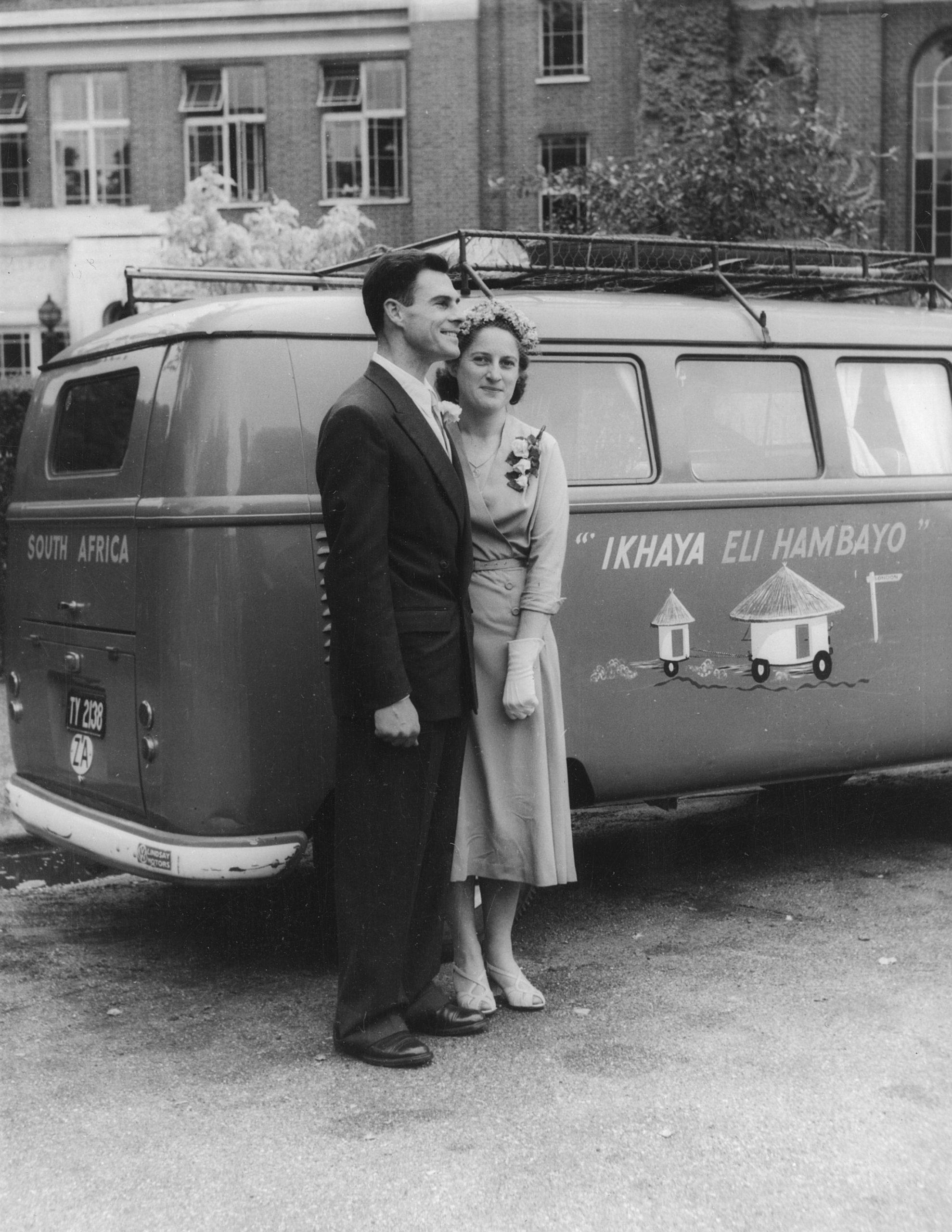


Great story and a mighty achievement. Thoroughly enjoyed your story and your photographic record of that trip. No doubt your confidence in the incredible VW Kombi was justified.